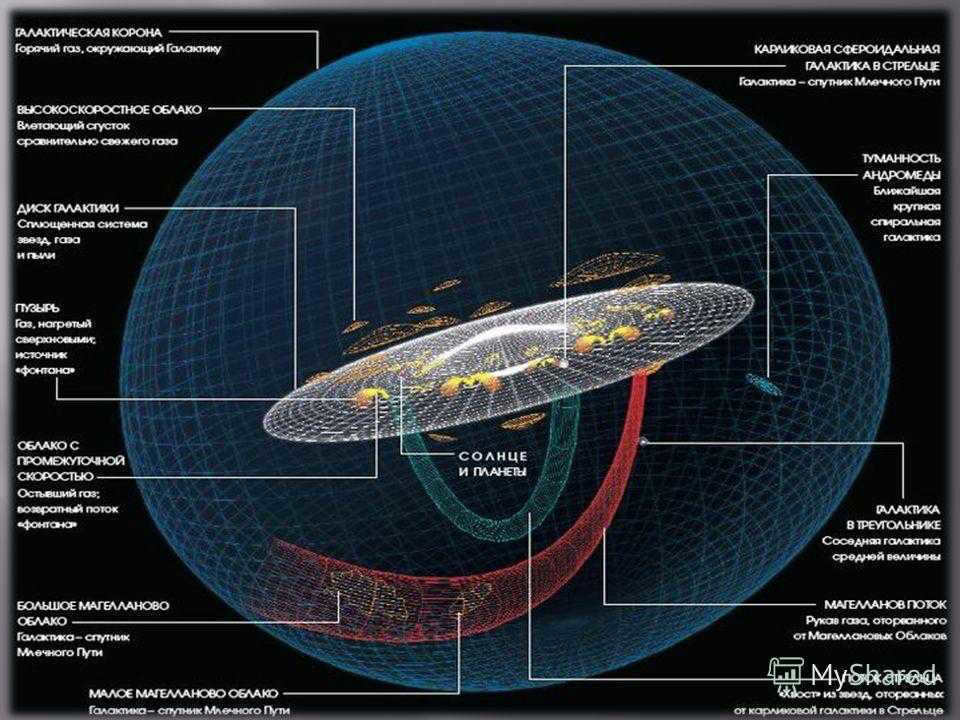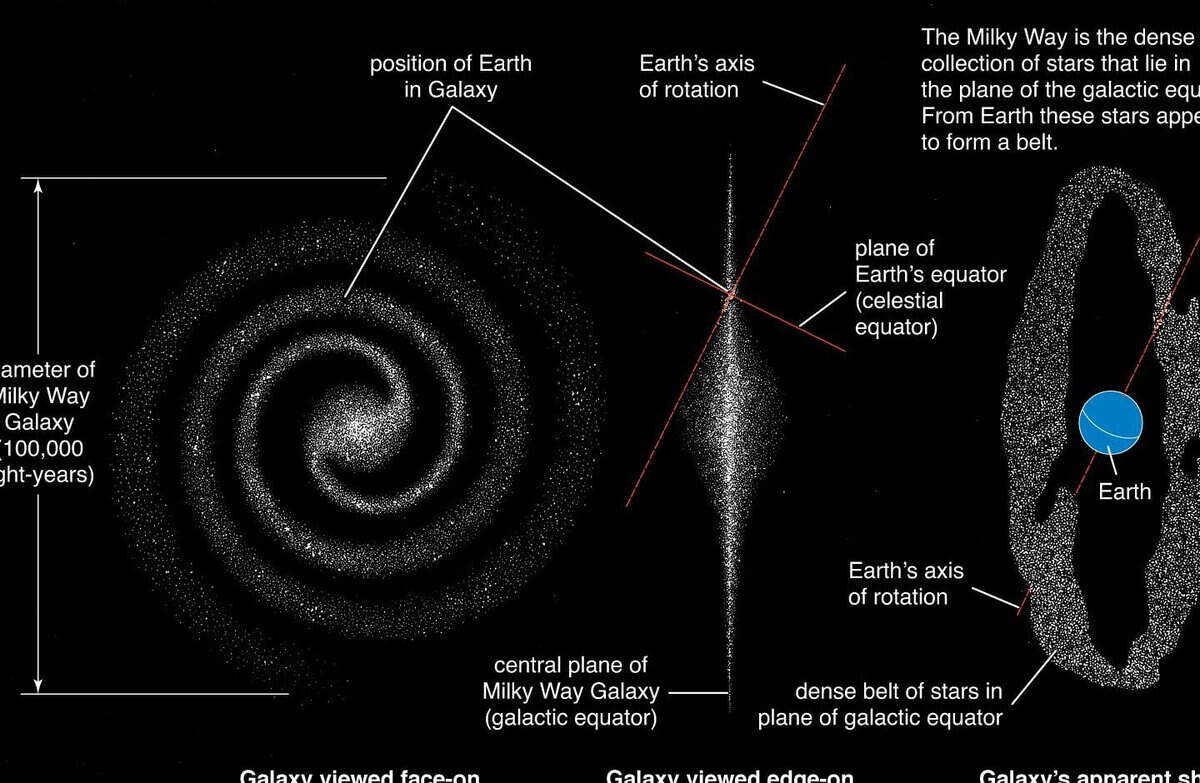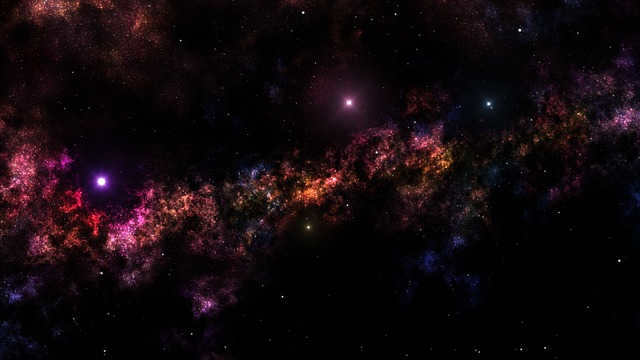
Throughout history, humans have been captivated by a mesmerizing streak in the sky. Its true nature has been a subject of speculation and wonder. Some believed it to be a divine path, a celestial river, or even a doorway to another realm. This enigmatic phenomenon has been revered and worshipped for its perceived mystical power.
Over time, eminent scientists dedicated their efforts to unraveling its secrets. It was not until the invention of the telescope that they discovered the truth – the streak is, in fact, a conglomerate of stars and various celestial bodies that can be observed from Earth.
What is the Milky Way Galaxy
Almost everyone is familiar with this term from their early years. However, when it comes to understanding the exact meaning and age of our galaxy, only a few individuals can provide a comprehensive answer to this inquiry.
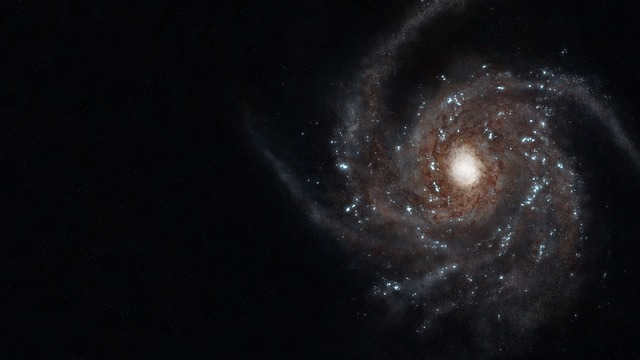
The cosmos is boundless. It encompasses countless galactic systems. A galactic system is a intricate assemblage of celestial entities: luminous orbs, celestial bodies, and their accompanying satellites, cosmic particles, enigmatic substances, and gases. All of these entities revolve around a singular core, held in place by the gravitational forces that emanate from it. This is precisely how our very own galactic system, known as the Milky Way, operates.
For centuries, the Earth was believed to be the center of the universe, a notion that was reinforced by religious teachings that stated the Earth was stationary and that the stars and planets orbited around it.

The Milky Way, which is visible in the night sky, was worshipped and believed to possess mystical powers. Various ancient civilizations created enchanting names for it, considering it as the pathway of the gods, a celestial bridge leading to paradise, a heavenly river that flows with divine milk. Hence, the modern name for our galaxy became the Milky Way.
According to ancient Greek mythology, it originated from the milk of Hera, the great goddess and wife of Zeus, the supreme god. Zeus secretly gave her the infant Heracles, whom he had fathered with a mortal woman. When the goddess discovered the deception, she pushed the child away, and her spilled milk formed a streak-like cloud in the sky.
Galileo’s remarkable breakthrough
Nevertheless, scientific progress never ceases. The advent of new discoveries and advancements in optical technology has significantly enhanced our ability to observe the celestial heavens. In fact, during the early 17th century, the brilliant Italian astronomer Galileo Galilei achieved a groundbreaking feat by constructing an extraordinary device for its era – a remarkably powerful telescope.
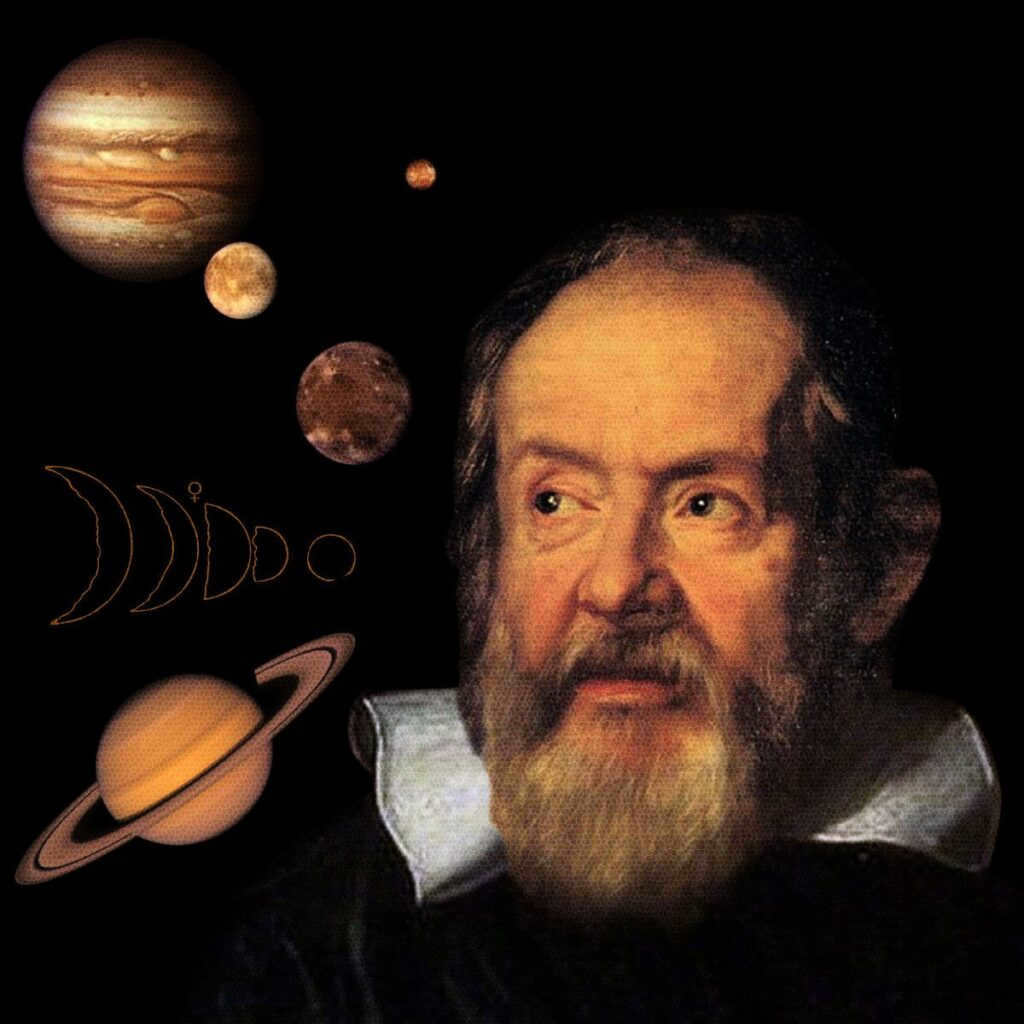
Galileo Galilei (1564-1642).
Galileo Galilei’s telescope was capable of magnifying objects more than any other device of its time. With this revolutionary invention, the renowned scientist made numerous groundbreaking discoveries. Among these discoveries, one of the most significant ones was his description of the Milky Way.
Using his telescope, Galileo Galilei was the first to observe that the shimmering silvery-smoky streak in the sky, which was visible even to the naked eye, was composed of countless stars. Furthermore, he deduced that these stars were not all the same. This was an astounding revelation at the time, and subsequent research confirmed Galileo’s findings. He truly comprehended and elucidated the enigmatic nature of this celestial phenomenon.
In the latter half of the 18th century, specifically two hundred years later, the English astronomer, William Herschel, devised a method to examine the Milky Way. Through his meticulous observations, he unveiled the existence of the galactic equator – a vast celestial circle situated in the vacuum of space. This extraordinary phenomenon is composed of an immense multitude of star clusters.

The Milky Way appears to be divided into two sections by the galactic equator. The density of stars is greater near this boundary. Our galaxy resides within this region. After observing these phenomena, Herschel formulated the theory that the celestial objects visible from Earth are all part of a single stellar system, and their existence is regulated by specific laws of physics.
The count of stars. What is the exact number of stars in the Milky Way
Can we accurately respond to this inquiry? It is challenging to determine… Can we enumerate them and provide a definitive value? It remains unknown…
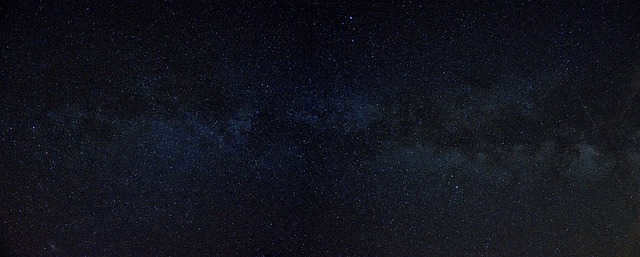
When gazing at the night sky, the naked eye can detect approximately 2,500 stars within the Milky Way – the galaxy we call home. By utilizing optical devices such as a telescope or even a pair of binoculars, one can observe around 5.8 to 8 thousand stars. However, this count is relatively small in comparison to the total number of stars that exist!
According to astronomers, the estimated number of stars within our galaxy ranges from 100 to 400 billion. Some even suggest that this number could potentially reach a trillion. It’s worth noting that not all of these stars are large or bright enough to be considered full-fledged stars – approximately 100 billion of them fall into this category.
This discrepancy can be attributed to the fact that our planet resides within the Milky Way, limiting our perspective to only a fraction of the entire galaxy. Anything beyond our current vantage point remains unseen.
The field of optics has been significantly enhanced by modern technology. As a result, astronomers now have the ability to closely examine the celestial heavens and uncover fresh revelations.
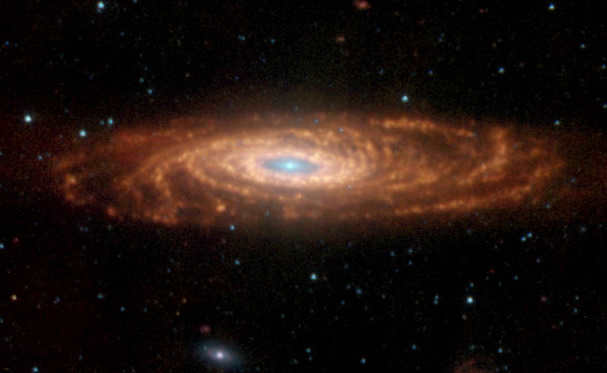
The Milky Way, our galaxy, was discovered by American astrophysicist Edin Hubble to not be the entire universe, nor its center. Hubble extensively studied the visible universe from Earth and concluded that there are numerous other galaxies, each with their own unique characteristics.
Hubble devised a classification system for galaxy shapes, which is one of their defining features. According to this system, galaxies can be categorized as spiral, elliptical, lenticular, or irregular.
Our galaxy, the Milky Way, is a spiral galaxy. This can be explained by the gravitational pull of a central point, around which the stars, planets, and other components of the galaxy orbit in their own respective paths. This independent orbital motion results in the formation of spiral arms.
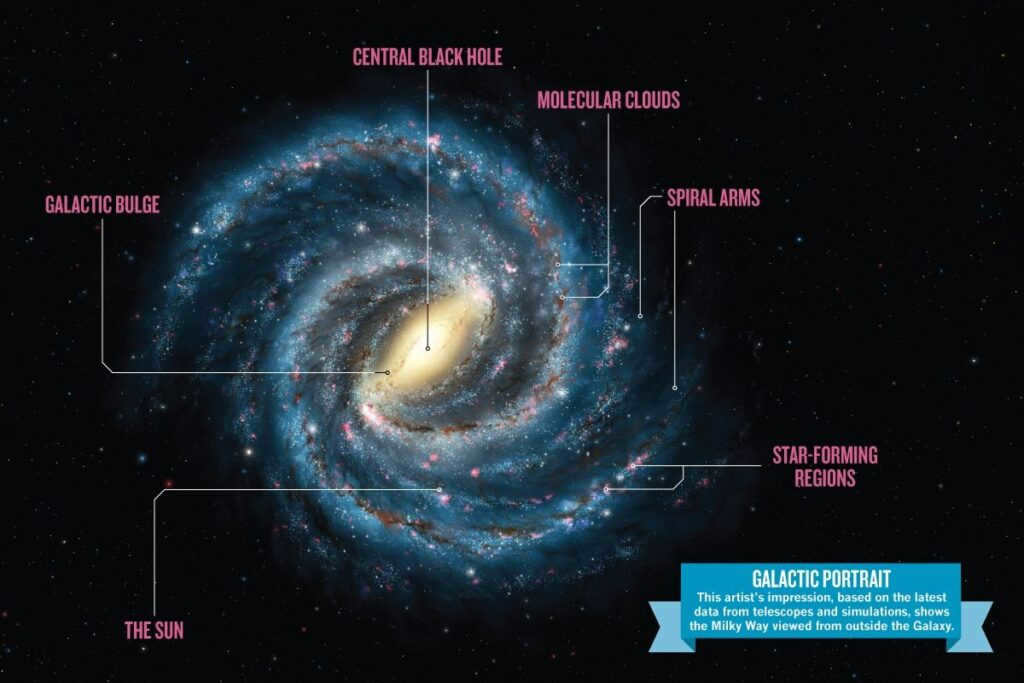
Undoubtedly, all these assumptions are purely hypothetical. Our planet is situated within the confines of the galaxy, precluding any opportunity to witness the true appearance of the Milky Way from an external perspective. Furthermore, humankind has yet to acquire the knowledge or means to venture beyond the boundaries of our own galaxy. Can such a feat ever be accomplished? Providing a definitive answer to this question is undeniably challenging…
Undoubtedly, one of the most remarkable characteristics of our galaxy is its unparalleled capacity to allure and assimilate clusters of celestial entities and even smaller galaxies. This extraordinary ability has enabled the Milky Way to acquire several galaxies as its companions.
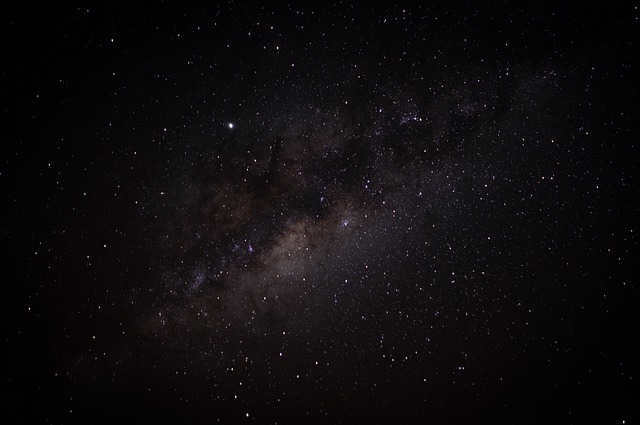
Scientists have discovered that approximately 15 billion years ago, our Milky Way galaxy “appropriated” a dwarf galaxy located in the Sagittarius constellation, which is approximately 70,000 light-years away. Over time, the stars from this dwarf galaxy are gradually being pulled into the Milky Way.
This phenomenon is actually a natural cosmic process that has occurred multiple times in the past. In fact, a small galaxy from Sagittarius has previously passed through the Milky Way. The merging of galaxies, specifically the attraction of larger galaxies to smaller ones, will continue to occur. Astronomers estimate that the last occurrence of this process took place approximately 200 million years ago.
The primary features and measurements of the Milky Way
Extensive research has been conducted on our very own galaxy. Being situated within it, the task of understanding its properties was relatively more straightforward compared to exploring the distant cosmos.
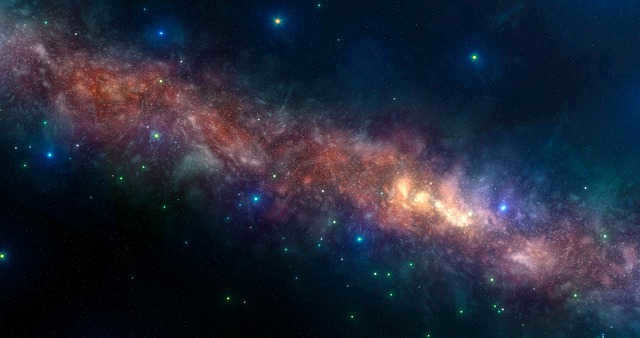
Scientists have successfully determined the dimensions of our galaxy, the Milky Way, which measures approximately 100,000 light years across. Additionally, they have estimated its age to be around 13.6 billion years. Another significant measurement is its luminosity, which experts believe to be equivalent to 8 × 1036 W.
The astronomers were also fascinated by the weight of the galaxy. In order to determine it, they initially computed the mass of the stars. They utilized the mass of our Sun as a standard unit of measurement, which is 1.989 × 1030 kg. By employing the selected approach, they determined that the average weight of other stars is approximately equivalent. By multiplying this average weight by the number of stars in the Milky Way (estimated to be no less than 200 billion), they arrived at a value of 3.98930 kg.
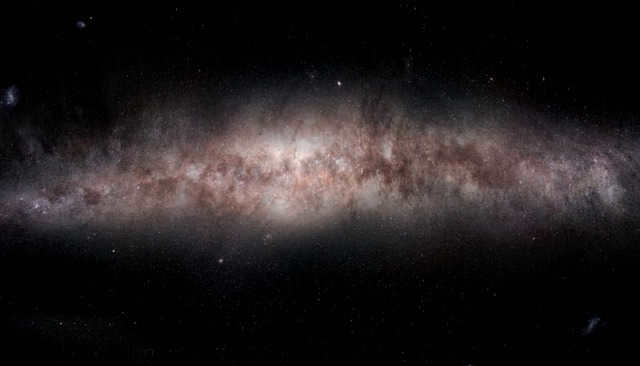
However, this represents only 4% of the entire mass of the galaxy. The mass of stellar gas is over three times greater than the combined mass of all the stars. Additionally, there is a black hole present, weighing approximately 4.1 million times the mass of the Sun.
Nevertheless, the majority of the mass consists of dark matter, which scientists are still uncertain about. However, it plays a crucial role in holding the stars and their satellites within galaxies. Dark matter comprises more than 85% of the total mass of the galaxy.
Therefore, it is estimated that the Milky Way has a total mass of 3 trillion times the mass of the Sun.
Dimensions
When astronomers attempt to determine the dimensions of our Milky Way galaxy, they base their conclusions on the fact that it has a disk-like shape.
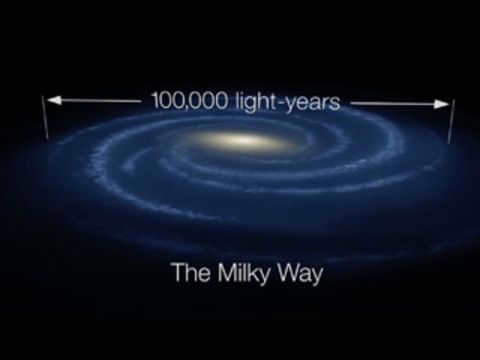
The Milky Way is believed to have a diameter of around 10,000 light years and a thickness of 1,000 light years.
How many stars are there?
As mentioned earlier, the Milky Way is estimated to contain at least 200 billion stars, although some evidence suggests that the total number could be as high as 400 billion.
In addition to stars, the Milky Way also contains “brown dwarfs,” which are not true stars but something between stars and planets.
Luminosity refers to the quantity of light that a galaxy emits. Among its group, the Milky Way stands out as one of the most radiant galaxies. However, it falls behind others like Andromeda, which is noticeably brighter. To measure the amount of light emitted by a galaxy, astronomers employ spectrometric techniques. These methods involve analyzing the wavelengths of light, each of which corresponds to a specific color. Different frequencies emit varying degrees of light at specific distances, and this can be quantified using specialized spectrometric instruments. Following this, the brightness of the galaxy is determined by normalizing the measurements based on the area and distance from the galaxy.
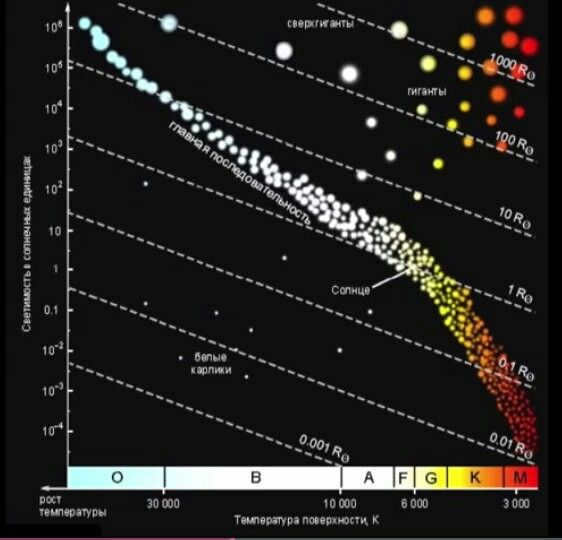
By examining the luminosity of our star, the Sun, we can estimate this value to be around 20 billion. In numerical form, this can be represented as 8 × 1036 W. The stellar magnitude of the Milky Way, or its numerical measure of brightness, is 21.
Classification and overall organization
The spiral classification encompasses our home galaxy in the realm of galactic structures. Nearly half of the stellar assemblages in the universe fall into this category. The majority of these objects are relatively youthful, gradually shedding their gas and dust over time as they evolve.
The arrangement and constitution of the Milky Way
Comprising over 200 billion stars, our Milky Way exhibits a multifaceted structure. The central region houses the majority of these stars.
The nucleus
The nucleus constitutes the heart with an immense abyss at its center. It possesses a mass 4 million times that of the Sun. Encircling it is another substantial black hole, alongside countless comparable, albeit smaller entities. Gravitational forces maintain the proximity of the stars to the nucleus, compelling them into their individual orbits. It is believed that it is within the vicinity of black holes that all assemblages of celestial bodies rotate.

The nucleus of the galaxy is home to the largest and most luminous stars, as well as being a hub for star formation. This region emits the highest amount of energy compared to other parts of the galaxy.
Located in the constellation Sagittarius, at the center of the nucleus, there is a bulge or thickening with a diameter of 8 thousand parsecs. This bulge takes on an ellipsoidal shape. The Sun is approximately 28 thousand light years away or 8.5 thousand parsecs away from this central region.
Jumper
The theory regarding the spiral configuration of our galaxy and the existence of the jumper has been substantiated by modern and advanced telescopes. In relation to the demarcation line between the central region and the Sun, it traverses the core of the Milky Way at a precise angle of 44 degrees.
Spanning a staggering length of 27,000 light-years, the jumper predominantly comprises of “ancient” red stars. Encircling it is a ring of molecular hydrogen, extending over a distance of 5 kiloparsecs. This hydrogen serves as the primary source for star formation.
The Galactic Disk
The galactic disk is the prominent feature of our Milky Way galaxy that is visible in the starry night sky. The disk is composed of flat arms that form a beautiful spiral shape. It is estimated to have a mass that is 150 billion times greater than that of the Sun.
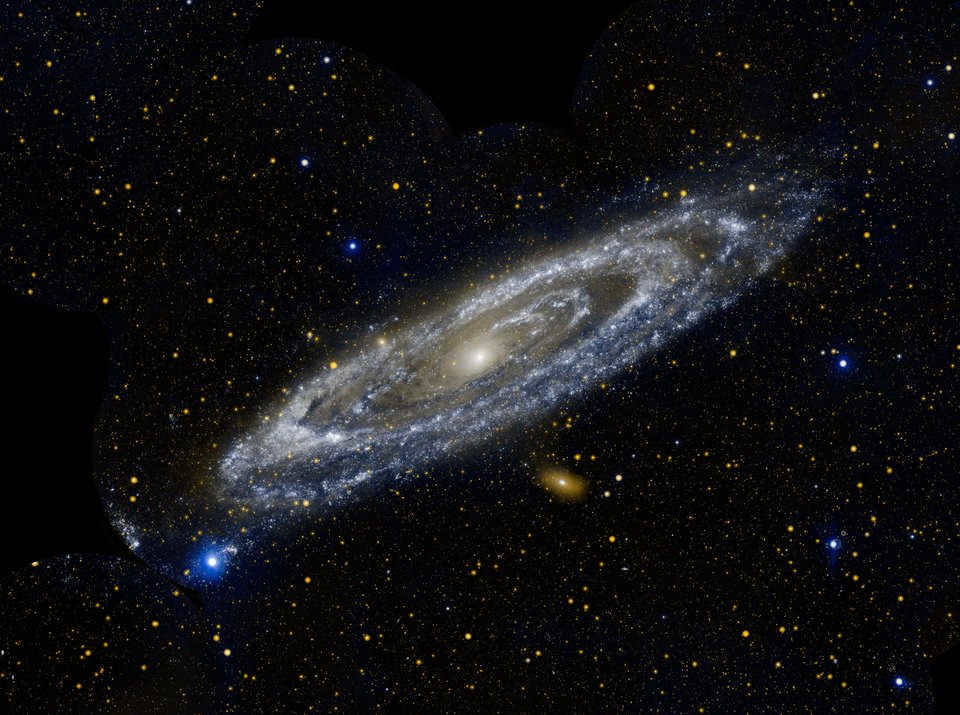
The structure of our galaxy is composed of two distinct components. One of these components is relatively thin, while the other is much thicker. The thinner component has a thickness of just over 1,000 light years near the Sun, while the thicker component spans about 4,000 light years.
The thin disk primarily consists of younger stars that have a higher metallicity, meaning they contain a greater abundance of elements heavier than helium and hydrogen. On the other hand, the thick disk is predominantly composed of older stars with a lower metallicity.
There is also some noticeable curvature in the shape of the galactic disk, which is tangential to the galactic plane. This curvature is believed to be a result of interactions with neighboring galaxies.
In the disk’s plane, you can find the Perseus, Orion, Centaurus, Swan, and Sagittarius spiral arms. The Orion arm, where our Sun is located, lies on the inner side. Our star orbits the galaxy’s center at a velocity of approximately 230 km/s. It takes around 240 million years for a full revolution to occur.
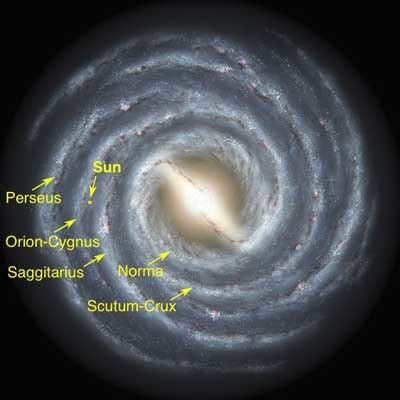
The spiral arms of our Milky Way Galaxy are an enigma, as scientists are unable to observe the galaxy from a lateral perspective. Nonetheless, their presence is inferred through the distribution of neutral hydrogen and molecular clouds.
Heavenly Body
A heavenly body, also known as a halo, is a nearly spherical entity with a radius of approximately 260 thousand light-years. Its center corresponds to the center of the galactic disk.
It consists of a significant amount of dark matter and globular clusters, primarily located about 100 thousand light-years away from the center. Additionally, it contains stellar streams that were assimilated by the Milky Way along with other galaxies. The stars within the Milky Way’s halo are faint and elderly. There are both clusters with millions of stars and individual stars.
The majority of objects within the halo move along elongated orbits, while some of its constituent stars exhibit chaotic, independent motion from other celestial bodies.
Video: The Galaxy’s Structure Unveiled
Position of the solar system within the galaxy
Recent studies have revealed that the solar system is situated approximately 27 thousand light years away from the center of the galaxy. It is estimated to be around 35 thousand light-years away from the junction zone. Positioned between the spiral arms of Sagittarius and Perseus, the Sun is located at the center, with distances of approximately 3 thousand light-years to both arms.
Due to the movement of our star, its velocity matches that of the compaction wave responsible for the formation of the spiral arms at the galactic center. This is attributed to the Sun’s position at the corotational center, which played a crucial role in the origin of life on Earth.
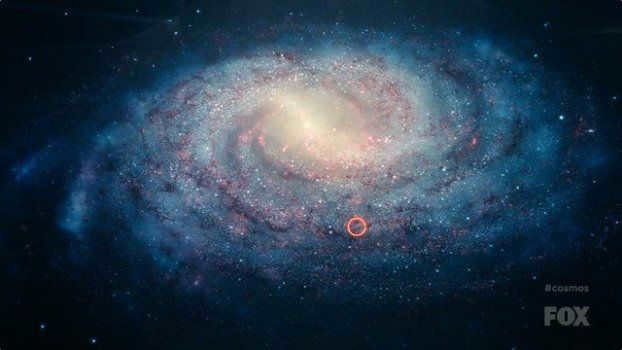
The Position of the Milky Way in the Universe
The location of our galaxy within the universe is also determined. It is a component of one of the vast cosmic structures known as superscopes. Each of these structures contains multiple hundreds of galaxies, which interact with one another.
The Milky Way is a part of the Local Group of galaxies. Furthermore, it is included within the Virgo Superscope, which is a constituent of the Liniaceae structure. The center of gravity for this structure is the Great Attractor, and approximately 100 thousand galaxies belonging to this structure are moving towards it at a velocity of 600 km/sec.
The Earth is situated at a distance of 250 million light years from the Great Attractor. The nature of what lies beyond the Great Attractor remains unknown to scientists. Additionally, Laniakea is a component of a supercluster referred to as the Whalefish.
The Milky Way Galaxy and its Surroundings
Recent observations and research into the cosmos have revealed that the Milky Way is just one galaxy among the vastness of the Universe. The expanse of outer space is in constant motion, with new clusters forming and galaxies merging together. The gravitational forces at play draw smaller galaxies towards larger ones.
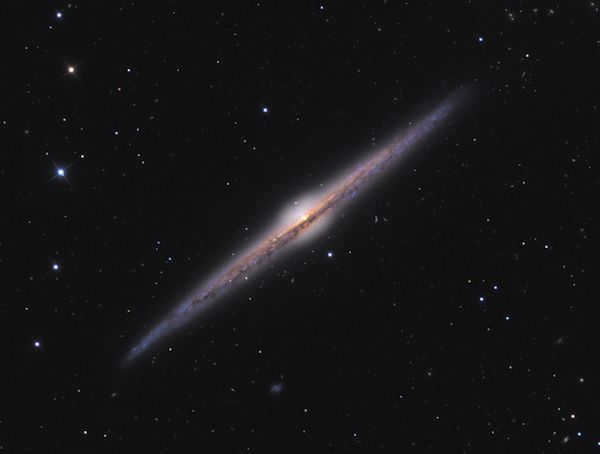
Our Milky Way has companions in the form of dwarf galaxies and large Magellanic clouds. These companions constantly interact with our galaxy, although we still have much to learn about them. Additionally, there are star clusters that have not yet developed into galaxies.
Toucan Z is an example of a dwarf galaxy that interacts gravitationally with our galaxy through a stellar stream. This interaction allows it to merge with our galaxy while maintaining its structure largely unchanged.
The largest entity in the Local Group is the Andromeda galaxy, which is accompanied by the nearby Triangle Nebula galaxy. Furthermore, galaxies included in the constellations are easily visible from Earth and exhibit elliptical and irregular shapes.
The Encounter between the Milky Way and Andromeda Galaxies
The perpetual motion of cosmic entities never ceases. Our very own Milky Way is hurtling towards the Andromeda galaxy at a staggering velocity of 120 km/s. Andromeda, our nearest neighboring galaxy, bears an uncanny resemblance to our own in terms of its shape and structure.
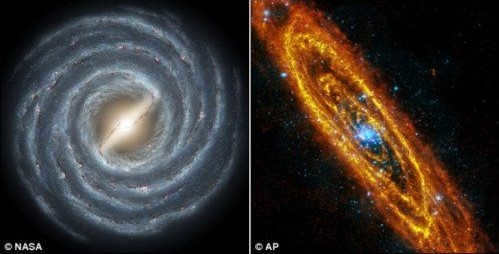
In approximately 4 billion years, it is predicted that they will come as close to each other as physically possible. The outcome of such an encounter is impossible to foresee. Andromeda, being larger, has the potential to engulf our galaxy. Eventually, they will combine into one. During this merger, certain stars will be obliterated, while new ones will emerge from the remnants.
Nevertheless, astronomers cannot assert with complete certainty that this collision between two massive galaxies is inevitable. It is entirely plausible that Andromeda may simply pass by without making contact with us. Nevertheless, the gravitational forces of the two galaxies will still exert some influence on each other. It is immensely challenging to accurately predict the precise effects these forces may induce.
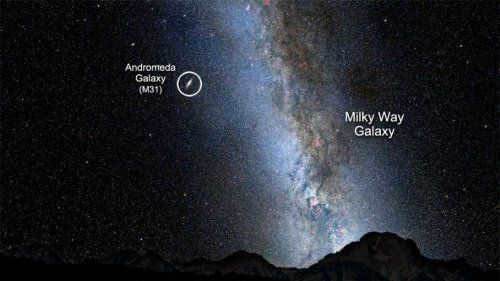
The Galaxy’s Evolution and Future
The merger with Andromeda may pose no threat to the Solar System. It is conceivable that it will eventually find itself in the intergalactic space. However, the Sun’s evolution is of much greater importance to Earth. Nevertheless, our galaxy is likely to exert its gravitational pull and assimilate smaller celestial bodies.
Throughout history, mankind has gazed up at the sky with a mixture of curiosity and apprehension. What lay before their eyes gave birth to countless tales, myths, and legends. Various cultures wove entire epics around the stars.
For instance, in ancient Egypt, the Milky Way was equated with the majestic Nile River. They referred to it as the heavenly river, believing it to act as a celestial divider, much like the Nile divides their land. Furthermore, within the starry expanse, exists a Cosmic Egypt, where souls journey after death.
The indigenous people of South Australia similarly regarded this breathtaking celestial band as a heavenly river. According to their traditions, fires illuminate its shores, offering a guiding light to humankind. However, dark patches represent the dwelling place of a fearsome monster, a malevolent and treacherous entity.
Known as the Road of Birds by the ancient Aryans, this celestial pathway was believed to connect the South and the North.
The Armenian
Vahagan, a divine being who is said to be the forefather of the Armenians, stole straw from King Barsham, the ancestor of the Assyrians, in a legendary tale. Carrying it through the sky, he intended to bring it to Armenia during the harsh winter.
During his journey across the heavens, Vahagan accidentally dropped the straws, creating a visible trail that remains in the sky to this day. In Armenian, this trail is known as “The Road of Straw,” which is the name for our galaxy.
The Hungarian Mythology: The Road of Warriors
According to Hungarian legend, if Attila, the great leader, senses any danger approaching his people, his son Chaba will descend from heaven to earth through the Milky Way. As Chaba journeys down, the hooves of his horse emit radiant sparks that can be witnessed in the sky. Hence, the Milky Way holds a significant role in Hungarian mythology as the revered Road of Warriors.
Greek
The Milky Way is a result of the milk from the goddess Hera, who forcefully removed a stranger’s child, Heracles, from her breast. Heracles was the son of her husband Zeus and a mortal woman. Zeus secretly gave the baby to his wife to nurse, hoping to grant him immortality. However, upon realizing that she was feeding someone else’s child, Hera became angry and cast him away. The name of the galaxy comes from the Greek word for milk, as well as the association with Hera.
Another version of the story suggests that Heracles’ mortal parents abandoned him in the forest. Nevertheless, his father Zeus did not want his son to perish. He sent his daughter Athena to rescue the baby and bring him to the goddess Hera.
There are also additional legends. Cronus, a god known for his treachery and cruelty, was prophesied to be slain by his own offspring, so he chose to devour his children. Rhea, his wife, made the decision to save the newborn Zeus. She concealed a stone within the baby’s garments and presented it to her husband. He insisted that she breastfeed the infant before giving him the stone. As she nursed the baby, the milk spilled onto the stone, resulting in the creation of the magnificent Milky Way.
In ancient India, it was believed that a crimson bovine traversed the heavens every evening. The sacred Indian hymn book “Rivgeda” recounts the tale of Aryaman, the hallowed pathway. “Bhagavata-purana”, a sacred scripture, proclaims that the Milky Way is the abdomen of a celestial dolphin.
Eastern Mythology
The people of the East: the Chinese, Vietnamese, Japanese, and Koreans referred to the Milky Way as the argent river. The deities fashioned it to separate the woman who wove garments for them and the shepherd who adored the weaver. The appellation has endured in the languages to the present day.
Mythology of the Native American Indigenous Peoples
According to Eskimo mythology, there is a tale of a young girl who scattered ashes into the sky in order to guide people during the night. Additionally, they believe that the Milky Way is the celestial trail left by the Raven, the divine being who created the world, as he traversed the sky. On the other hand, the Cherokee people have a legend which tells the story of one hunter who kidnapped the wife of another hunter. As she was eating, her dog accidentally scattered cornmeal, and these traces can now be seen as constellations in the night sky.
Curious information
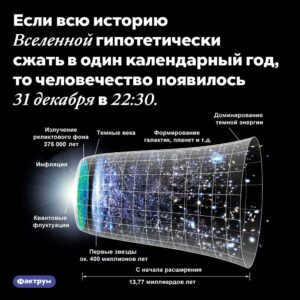
- In 460 BC, the renowned ancient Greek philosopher Democritus proclaimed that the Milky Way is comprised of stars. This hypothesis was later confirmed by Galileo Galilei in the 17th century.
- Remarkably, the rotation of our magnificent galaxy is not consistent. The inner region of the galaxy exhibits a faster movement compared to the outer region.
- Each year, approximately seven newly-formed stars come into existence within our galaxy.
- According to scientists, the age of the Milky Way galaxy is believed to be almost identical to that of the Universe.
- Within the constellation of the Dragon, lies a planetary system that closely resembles our Sun. It is speculated that this system may possess conditions conducive to supporting life.
The enigmatic nature of our galaxy is characterized by the presence of space bubbles.
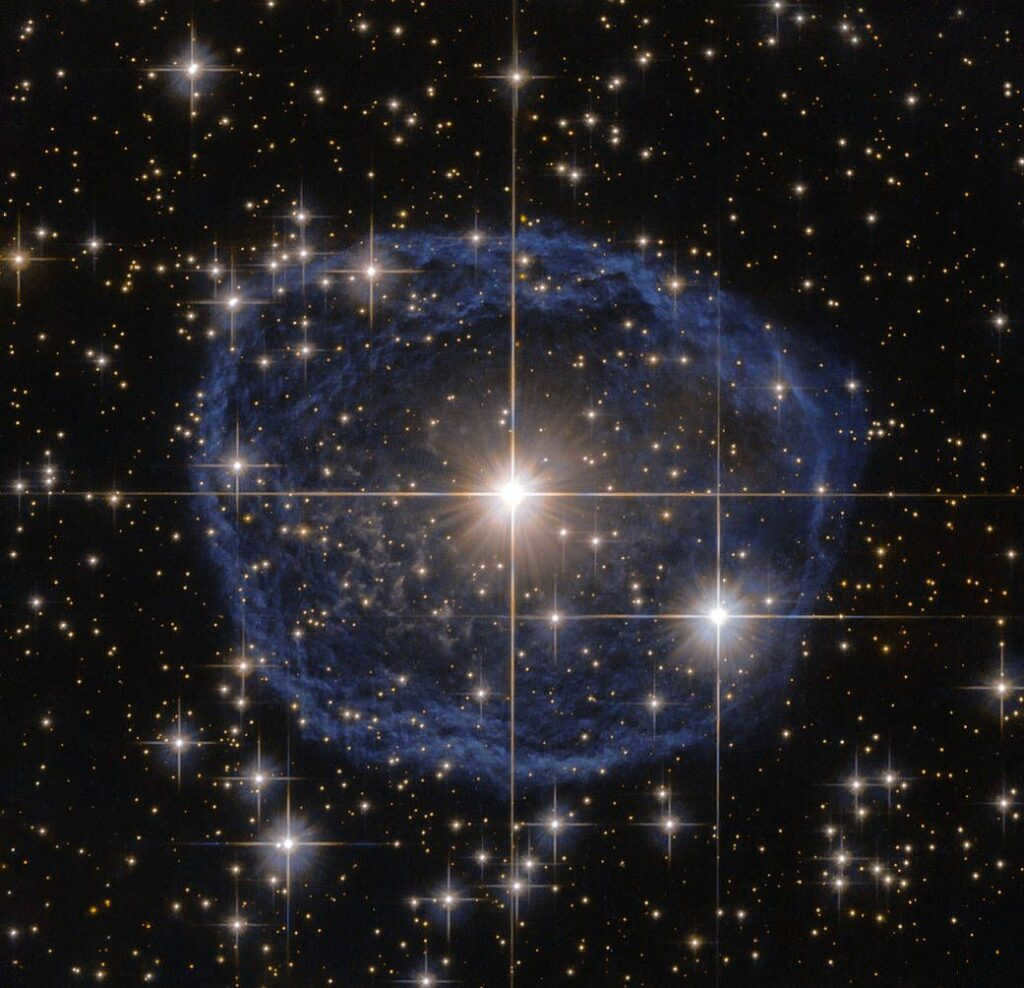
In 2010, scientists discovered previously unknown spherical objects with the help of a powerful modern telescope. These objects, known as Fermi bubbles, are made up of magnetic fields and gas emitted from the center of our galaxy’s core. They were found 25,000 light-years above and below the plane of the Milky Way.
Experts believe that the release of a significant amount of energy from the black hole at the center of our galaxy, known as Sagittarius A, is responsible for the formation of these massive space bubbles. It is also possible that the black hole rapidly absorbs and “disposes” of space bodies and objects, thereby removing any excess.
Previously, scientists believed that our galaxy had a flat disk shape with a lintel. However, recent research has revealed that this is not the case. While it does have a disk shape, it does not resemble a “flatbread” at all. These conclusions were drawn from observations of stars in the outer regions.
American researchers propose that the presence of the Magellanic clouds, which are satellites of the Milky Way, is the reason for this. These clouds are located close to our galaxy.
Nevertheless, it was previously known that our galaxy has a curvature. This was discovered in the mid-20th century and is more of an S-shaped curve. One side of the edge curves upward while the other curves downward. Further studies have confirmed that this curved structure is common among spiral galaxies.
Discover fascinating trivia about the Milky Way in this captivating video
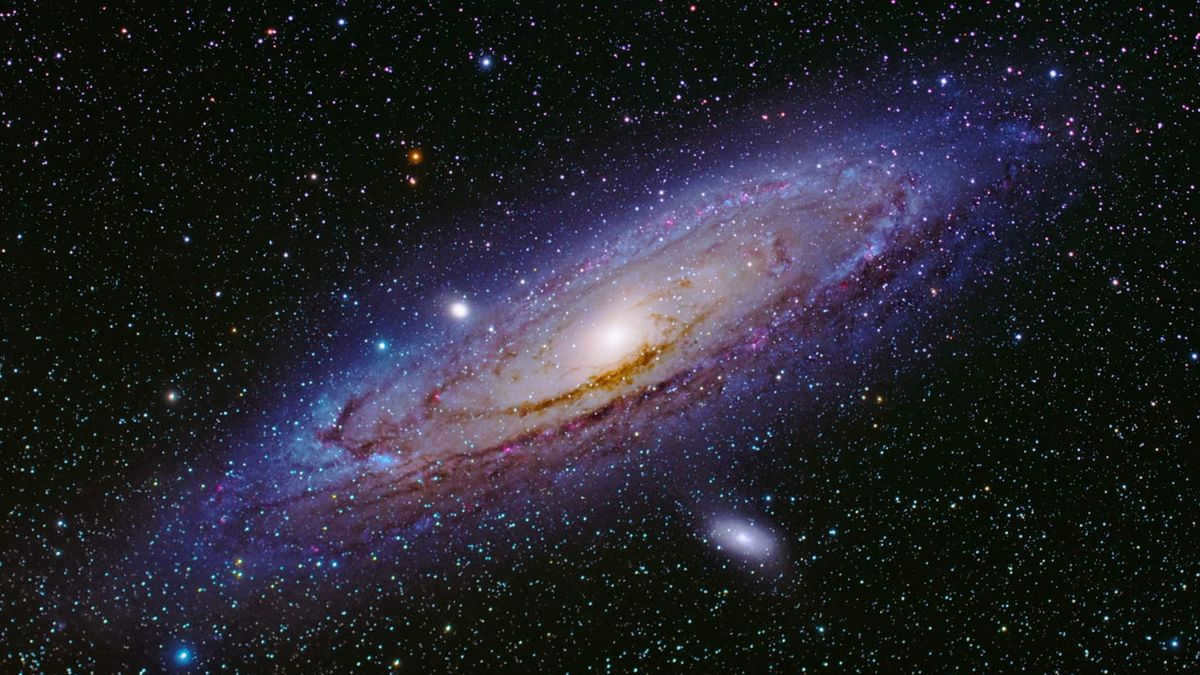

Studying the structure of our galaxy on a large scale poses certain challenges. Unlike other galaxies, we lack a clear perspective on the features of the Milky Way due to our position within it. However, we do possess certain advantages. Being situated within the Milky Way allows us to conduct detailed examinations of its stellar population and chemical makeup. These resources provide researchers with the necessary tools to compare our galaxy to millions of others in the universe, ultimately addressing the question of the Milky Way’s shape.
This week, a collaborative team of researchers from the United States, United Kingdom, and Chile published a paper that tackles this very question. Utilizing a catalog of ten thousand galaxies compiled by the Sloan Digital Sky Survey, they embarked on a quest to identify galaxies exhibiting similar characteristics.
Data analysis
In order to initiate their investigation, the scientists started by narrowing down the sample size by specifically choosing galaxies that align with our understanding of the Milky Way. Firstly, they filtered out galaxies that have a total mass similar to that of the Milky Way. Secondly, they eliminated galaxies that possess a significantly different “proportion of bulge to overall size.” Lastly, they exclusively picked galaxies that are of a similar type, using the Hubble classification system which categorizes galaxies based on their shape. Some galaxies, like our own, have a spiral shape, while others, typically older ones, have a more diffuse appearance and are referred to as elliptical galaxies. Further refinements can be made within Hubble’s classification system, such as the presence of central bulges in certain spiral galaxies, for instance.
After completing this process, the team ended up with 138 galaxies that bore a resemblance to our own. From this point, they were able to explore the specifics and determine just how similar these galactic counterparts are to us.
The team integrated the data into a model which forecasts the processes of star formation, considering how stellar winds remove excess gas from star systems that could potentially be attracted to the galactic center. The model also considers the chemical composition and metallicity of materials in various regions of galaxies.
It has been discovered that there are, in fact, galaxies that bear a striking resemblance to our own. Out of the 138 galaxies included in the study, a total of 56 were identified as spiral galaxies, just like our beloved Milky Way.
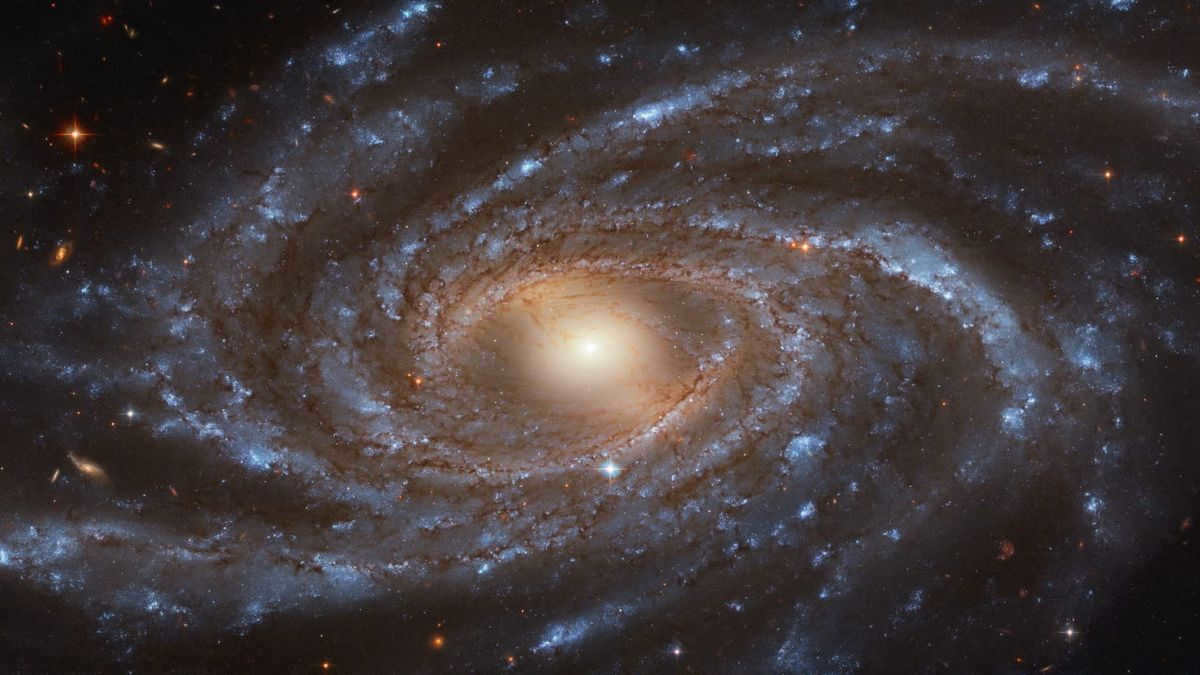
However, this statement does not hold true for all 138 galaxies that were examined. A significant number of galaxies that initially seemed similar to the Milky Way exhibited notable differences upon closer inspection. These galaxies can be categorized into two distinct groups.
The initial group (consisting of 55 out of the 138 galaxies) consists of galaxies that display no discernible differentiation between their inner and outer regions. In these particular galaxies, the process of star formation transpired uniformly over an extended period of time, without any sudden bursts of star formation in the core. Consequently, the stars in both the inner and outer regions of these galaxies possess identical characteristics.
The destiny of our Milky Way
One consistent characteristic of these galaxies that have ceased their star formation is that they appear to have concluded most of their stellar production in the previous era. This suggests that they could potentially be older than our own Milky Way.
If this hypothesis holds true, then what we are witnessing could be a glimpse into the forthcoming destiny of our Milky Way. It is possible that our galaxy will also eventually possess a dormant center, making these galaxies a preview of the subsequent phase in the evolution of galactic systems.
Greetings, I am the creator and administrator of the UniverseTodayRu website. My passion lies in the fields of astronomy, physics, and mathematics. I obtained my degree from the Pushkin BrSU Faculty of Physics and Mathematics in 2010. To conduct my observations and photography, I utilize the Sky-Watcher BK 909EQ2 and Canon EOS 1100D. During my free time, you can often find me gazing at the stars, contemplating the vast unknown. In addition to my love for the exact sciences, I also possess a keen interest in all things related to software and information technology.
The Milky Way is an incredibly unique galaxy. Its true shape is not what it appears to be, as it is in fact consuming its neighboring galaxies. Furthermore, it is home to a multitude of peculiar stars. "Hitech" shares some of the most extraordinary and fascinating facts about our galactic abode and its peculiar "residents".
The majority of the stars visible to the naked eye in the sky are actually a part of the Milky Way. Our galaxy, which is a spiral shape, stretches across a distance of 100,000 light years. Not only does it contain our planet Earth, but it also houses various other peculiar objects. Astronomers are continuously uncovering new findings about the Milky Way. Here are some of the most fascinating ones.
Contrary to the common belief that our Galaxy is a flat disk, it is actually not. Scientists have been aware since the mid-twentieth century that the Milky Way has a curved shape, resembling that of Pringles chips. Further research has indicated that this characteristic of galactic curvature is prevalent in other spiral galaxies as well.
Furthermore, a recent study published in Nature proposes that the wavy form of the galaxy is a result of its neighboring celestial bodies. The Large and Small Magellanic Clouds are two dwarf galaxies that revolve around the Milky Way. Researchers argue that these galaxies attract dark matter towards our galaxy, causing it to deform.
Galaxy mergers are a common occurrence in the universe. The Milky Way, for instance, is the result of past mergers and is expected to collide with the Andromeda galaxy in billions of years.
By analyzing data from the European Space Agency’s (ESA) Gaia, scientists have made an intriguing discovery about the stars in the Milky Way. They have identified two distinct groups of stars: “redder stars,” which are believed to have originated from a larger, metal-rich galaxy (where “metal” refers to any chemical elements heavier than hydrogen or helium), and “bluer stars,” which may have come from a smaller, metal-poor galaxy.
These findings indicate that the Milky Way formed through the merger of a smaller galaxy called Gaia-Enceladus. Furthermore, it continues to attract stars from other dwarf spheroidal galaxies such as the Big Dog and Sagittarius.
The Fermi Gamma-ray Space Telescope was sent into space in June 2008 with the purpose of conducting gamma-ray observations. After two years, researchers analyzed the data collected by the telescope and made a groundbreaking discovery – the existence of massive spherical formations composed of gas and magnetic fields originating from the core of the Milky Way.
These remarkable structures stretch an astonishing 25,000 light-years both above and below the galaxy’s plane, and have been dubbed the Fermi Bubbles. Subsequently, scientists from the Chinese Academy of Sciences determined that these formations are a result of the Sagittarius A* black hole’s activity at the center of our galaxy.
Kepler has made some remarkable discoveries, including the star Tabby (KIC 8462852) which is located 1,200 light-years away in the constellation of Swan and has a mass about 1.4 times that of the Sun.
What makes this star so intriguing is that it is only 20% as luminous as expected, for reasons that remain unknown. Scientists have speculated that there is something obscuring the star, possibly an object larger than a typical exoplanet. Some even proposed the idea that it could be an alien Dyson sphere, a theoretical astroengineering concept involving a large, thin spherical shell surrounding a star.
However, subsequent observations have ruled out this possibility. Instead, scientists now believe that the unusual phenomenon is caused by a dust field, although there are differing opinions on its exact nature. Regardless, nothing quite like it has been observed since.
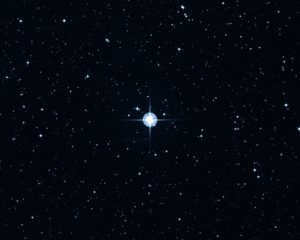
In addition to the Milky Way, there is a star called Vega that is located relatively close to Earth. It is a large and bright star, but it is not your typical star. Unlike most stars, Vega is spinning at an incredibly fast rate of 274 kilometers per second, which is close to the maximum speed that a star like this can achieve. Additionally, Vega has an unusual shape, resembling more of an elongated egg rather than a round shape.
The Milky Way Galaxy is an immense expanse, spanning approximately 1,000,000,000,000,000,000,000,000,000,000,000,000,000,000,000 kilometers. Even if one were to travel at the speed of light, it would still take over 100,000 years to traverse the entire length of the galaxy. Despite its vast size, much about the Milky Way remains a mystery, and scientists continue their efforts to uncover its secrets.
For more information, click here


The Milky Way is a galaxy that encompasses our solar system and all the stars that are visible to the naked eye. Its formation began approximately 12.5 billion years ago and it has been expanding ever since, assimilating smaller galaxies in its vicinity.
Discovery Timeline
Throughout history, observers have gazed at the night sky, attempting to unravel the enigma of the luminous band stretching across the celestial dome. The belief that the Milky Way was teeming with stars was first introduced by the ancient Greek philosopher Democritus, who lived between 460 and 370 BC.
Speculation persisted until 1610, when Galileo Galilei invented his inaugural telescope. By aiming it at the Milky Way, the scientist discerned that it consisted of a multitude of stars.
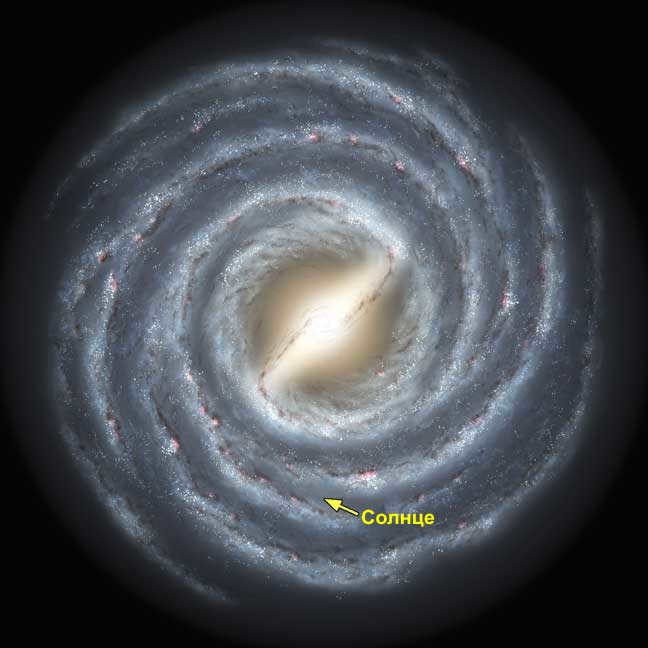
In 1700, William Herschel confirmed that the shape of the Milky Way is a disk. Immanuel Kant (1724-1804) was the first to propose the existence of other galaxies similar to our Milky Way in the vastness of space.
However, even in 1920, the debate raged on regarding the singular nature of the galaxy. Edwin Hubble and Ernest Epic were able to provide evidence supporting Kant’s hypothesis. They conducted measurements to determine the distance to other nebulae and concluded that they were located too far away to be part of the Milky Way.
In the latter half of the 20th century, astronomer Jacobus Corneli Kapteyn compiled a theoretical model of the Galaxy. He also calculated that the solar system is not positioned at the center of the core, but rather situated away from it.
In 2015, the Hawaii Astronomical Institute embarked on a mission to precisely ascertain the whereabouts of the Milky Way within the vast expanse of the Universe. Alongside its classification as a constituent of the Local Group, this galaxy also holds membership within the grandiose Laniakea. Spanning a staggering 500 million light years, this celestial domain is home to an abundance of star clusters numbering in the hundreds of thousands.
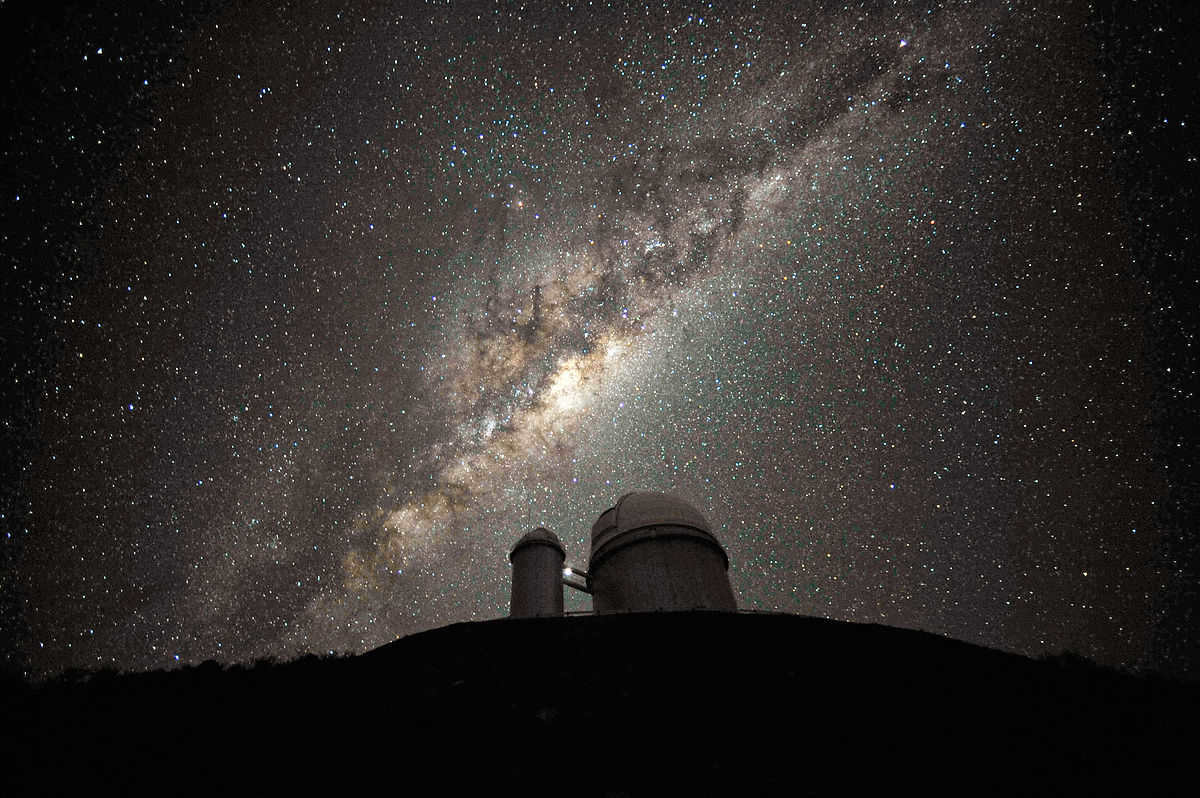
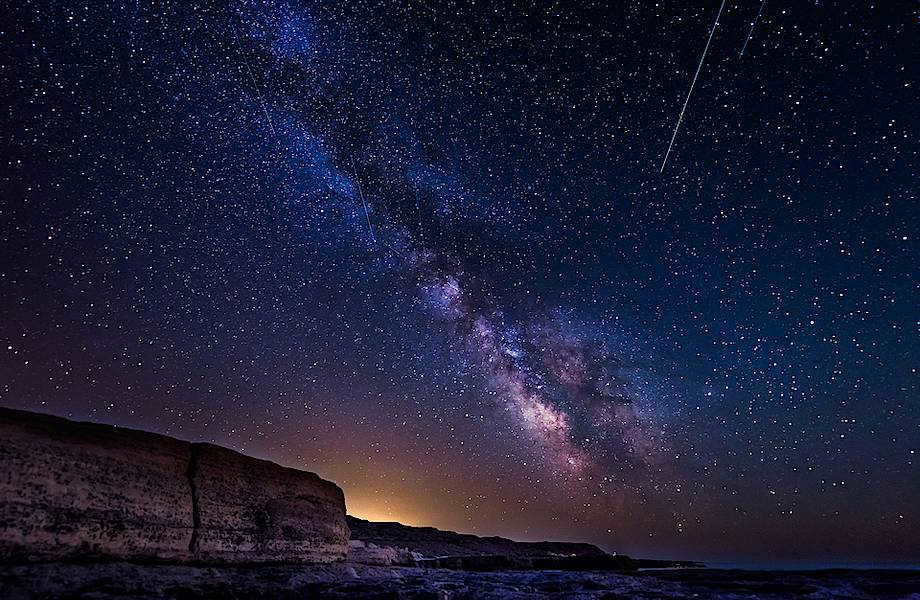
The weight of Laniakea is one hundred times greater than that of the massive Virgo cluster. However, Laniakea is not the largest entity in existence. It is merely a component of the expansive Keith super cluster, which is itself a constituent of the Pisces group – an expanse of space where an immense concentration of galaxies can be found.
Currently, astronomers have not attained the ability to precisely monitor the movement of objects within Laniakea. At present, it is hypothesized that the Milky Way is steadily progressing further into the cluster.
The appearance of our Galaxy is the reason behind its name. When observed from Earth, it appears as a hazy haze or a milky trail. The ancient roots of the name Milky Way can be traced back to the Latin term “Via Lactea”.
This name can be found as early as in the ancient work “Tadhira” by Nasir al-Din Tusi: “Depicted by numerous small and closely packed stars. They are situated closely together, giving the impression of spots. In terms of color, they bear a resemblance to milk…”.
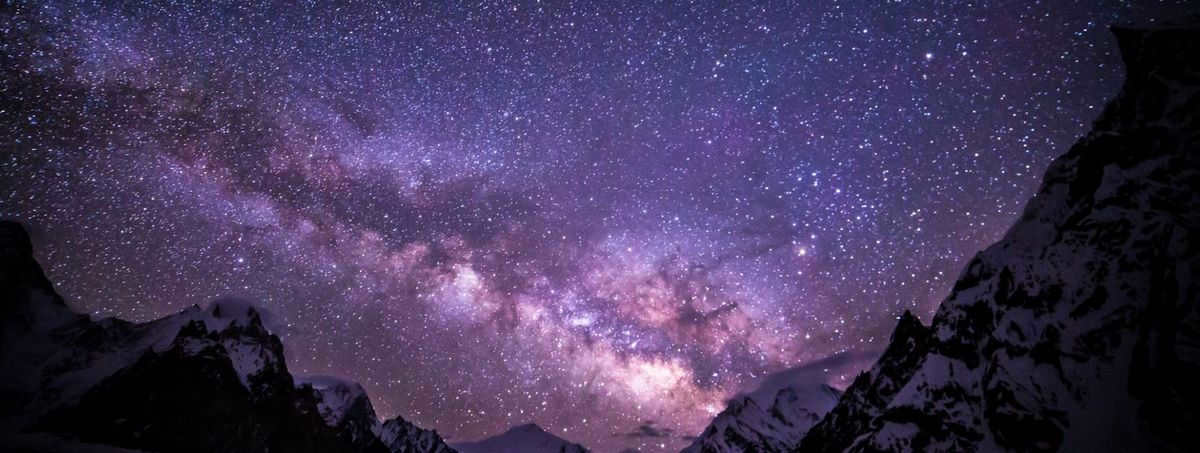
However, it is challenging to determine the exact origin of the name. The term “Milky Way” has been in use for 2500 years, making it difficult to pinpoint its original source. It is possible that it derived from the Greek word “galaktos”, which meant a “milky celestial object”.
In China, the Milky Way is known as the “Silver River”. According to Chinese mythology, the gods placed this river in the sky to separate the weaver from the shepherd who had fallen in love with her. This tale is a tragic romance on a grand scale. Within the Cherokee tribe’s folklore, our galaxy is referred to as “the way the dog ran away”. Legend has it that the Milky Way was formed when a dog stole a bag of cornmeal and scattered it along the road during a chase.

The Milky Way is a type of spiral galaxy, characterized by a gap spanning approximately 27,000 light-years. This gap is filled with the brightest stars, which extend from the center and traverse the galaxy’s middle.
What sets the Milky Way apart from other galaxies is that its spiral arms do not originate from the central core. Instead, they begin at the edges of the gap, where our solar system is situated.
It wasn’t until the 1980s that the classification of the Milky Way as a spiral galaxy was firmly established. The definitive confirmation came in 2005 from the Lyman Spitzer Telescope.
There is a region in the Milky Way known as the galactic center, which has a diameter of around 6400 light-years and possesses distinct characteristics compared to other parts of the Galaxy.
Referred to as a “cosmic laboratory” by scientists, the center of the Galaxy is constantly witnessing the formation of new stars within its vicinity. It is here that the galactic nucleus is situated, initiating the condensation and densification of our stellar system billions of years ago. The distance from the Sun to the galactic center is roughly 3 thousand light-years.
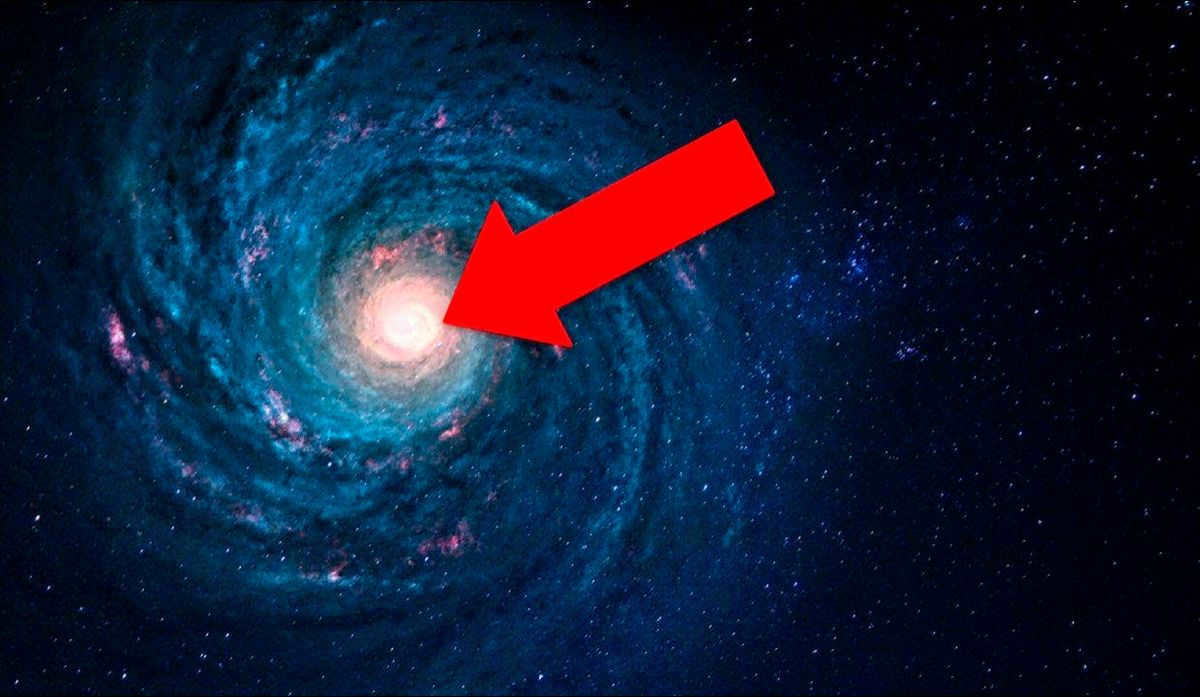

According to scientists, there is a supermassive galactic object called Sagittarius A* situated at the heart of the Galaxy. It is estimated to have a mass of approximately 4,000,000 times that of the Sun. Orbiting around this enormous black hole is the second largest black hole in the Galaxy, with a mass ranging from 1 to 10 thousand times that of the Sun.
It takes the medium-mass black hole around 100 Earth years to complete one full revolution around Sagittarius A*.
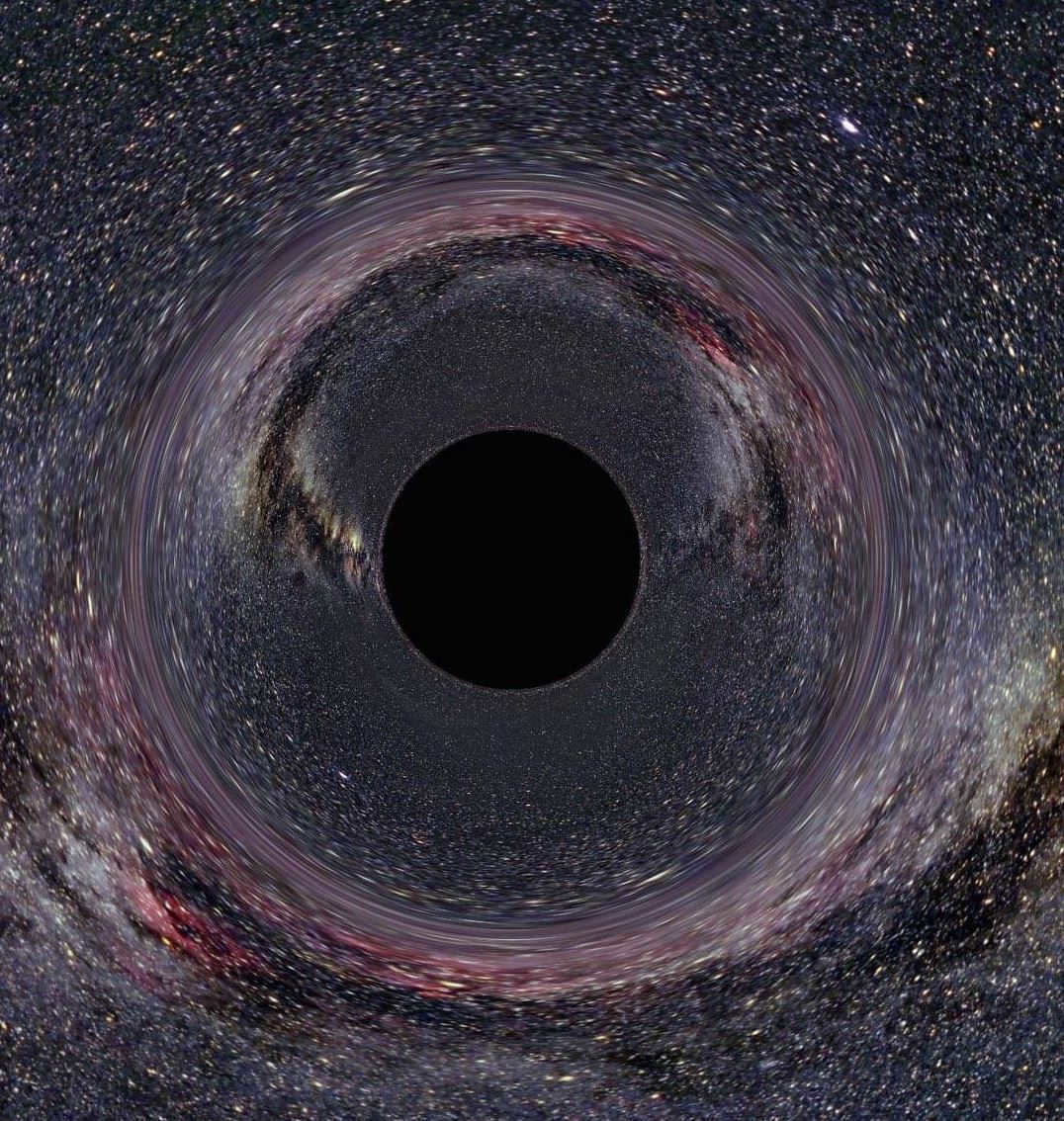
According to the researchers, apart from these two entities, there exist numerous black holes within the galactic nucleus, which, in contrast to the aforementioned duo, possess relatively lower mass and size.
Each of these black holes generates its own gravitational field. The magnitude of the force exerted by an object and the size of the object itself determine the intensity of the gravitational field it produces.
The collective gravitational fields of the black holes in the galactic nucleus result in a tremendously potent gravitational force. By combining their attractive forces, these black holes influence the movement of the galactic stars, keeping them in their respective orbits.
Scientists assert that stars, influenced by such an immensely powerful gravitational force, follow unconventional paths. As a result, they exhibit peculiar indentations and protrusions.
There is a part of the Milky Way galaxy called the branches that looks like sleeves. Scientists have discovered that these spiral arms have a long lifespan, meaning they exist for a considerable amount of time instead of dispersing in the surrounding cosmos quickly.
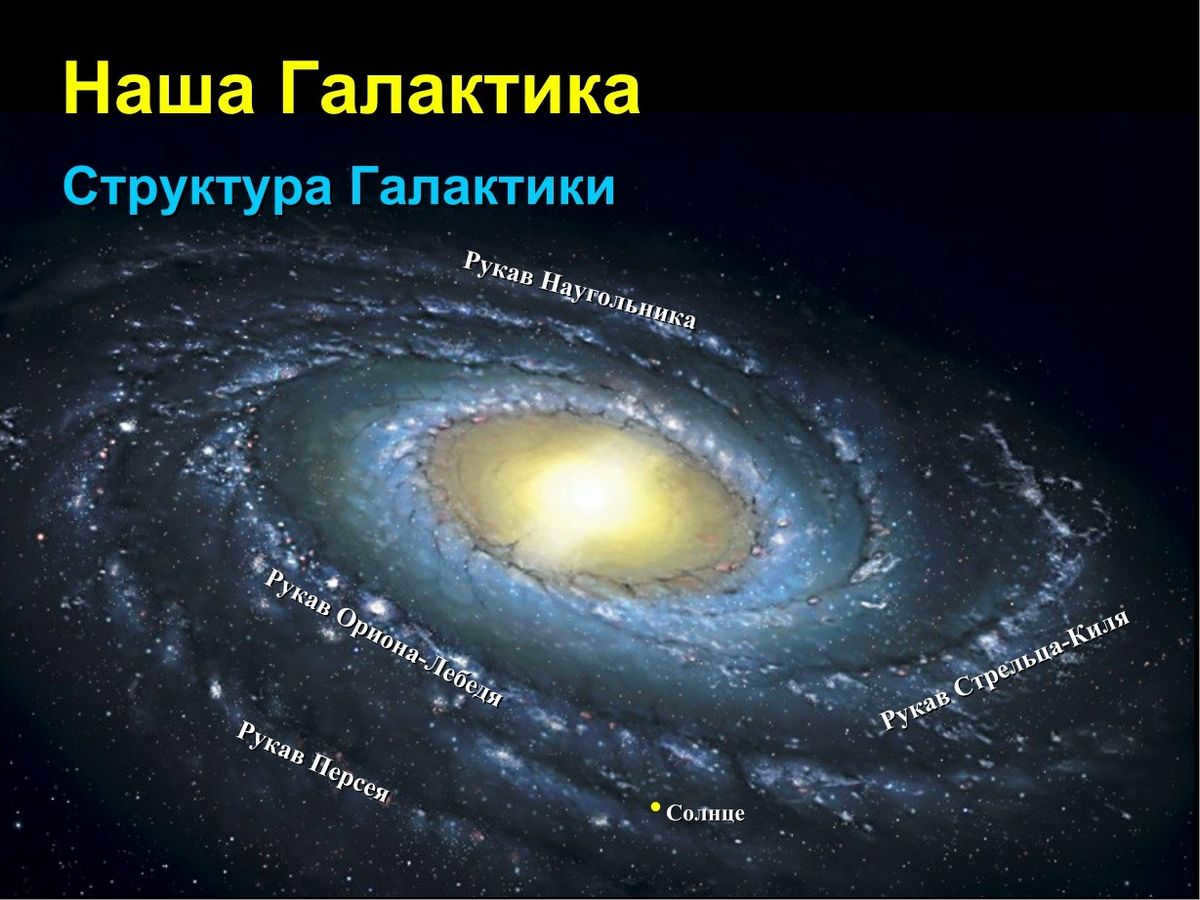
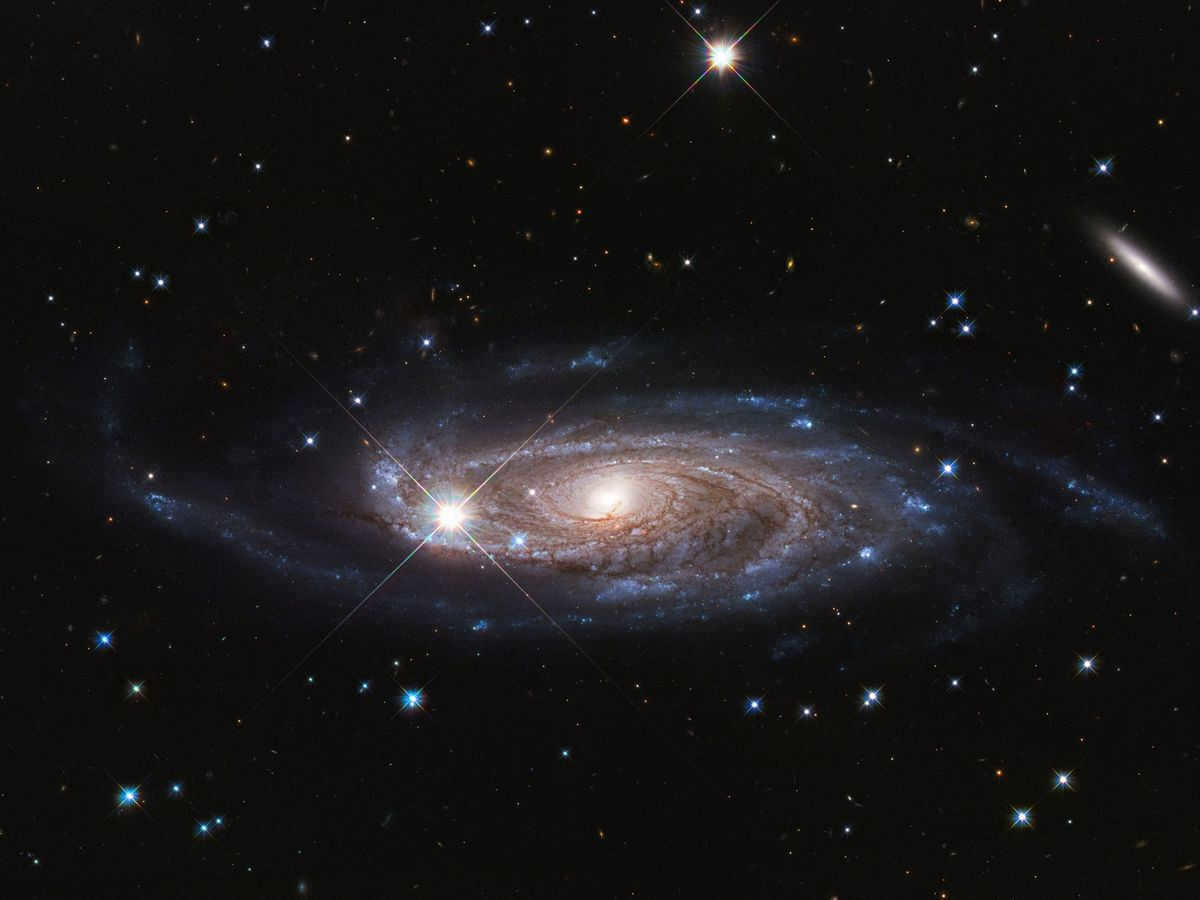
Based on the opposite, it can be inferred that the Universe should be mainly composed of galaxies that do not have galactic arms if we assume that galactic arms exist only for a short period of time. However, this contradicts the observations of galaxies in the Universe, as the predominant type is spiral objects.
The formation and development of galactic arms is caused by instability in the galactic disk. This instability leads to matter breaking away from the disk and acquiring spiral-shaped branches as it rotates, which are known as density waves.
Observable properties of galactic spiral arms include:
Because of the Sun’s position in relation to its planetary system, it is impossible to visually observe the arms of the Galaxy from our solar system. Additionally, the cosmic distances are so immense that humanity currently lacks the necessary technology to travel such vast distances and observe our Galaxy “from the outside.”

As a result, the configuration of galactic arms is being explored by scientists through the observation of carbon monoxide (CO) molecular gas in outer space. After analyzing the data, the researchers have concluded that our Milky Way galaxy consists of two arms. These arms originate in the central region of the Milky Way at the intersection known as the bar.
Furthermore, astrophysicists have determined that there are an additional two arms in the inner part of the galaxy. Together with the initial pair, these arms form the structure of the Milky Way galaxy’s four arms in its outer region, where the line of neutral hydrogen is located.

The spheroidal halo (corona) surrounding the galactic disk is composed of ancient stars and globular clusters, with 90% of them located within 100,000 light-years from the galaxy’s center. The halo’s temperature ranges from 5-105 K.
Recently, several globular clusters, including PAL 4 and AM 1, have been discovered to be positioned more than 200,000 light-years away from the center of the galaxy. The center of symmetry for the Milky Way’s halo aligns with the center of the galactic disk.
The halo is predominantly comprised of extremely old, faint, and low-mass stars. These stars exist individually as well as in the form of globular clusters, which can contain millions of stars.
The population of the galaxy’s spherical component is estimated to be over 12 billion years old, which is generally regarded as the age of the entire galaxy.
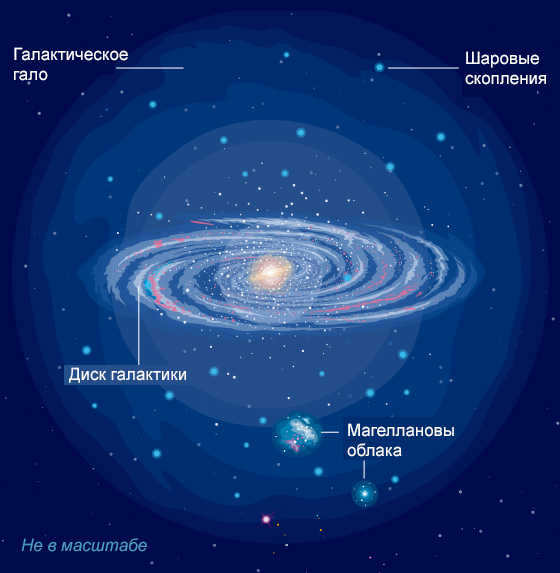
Active star formation takes place in the disk, particularly in the spiral arms where there is a higher density. Star formation in the halo has ceased, although scattered clusters can still be found primarily in the disk.
Scientists believe that the majority of the galaxy’s mass is made up of dark matter, which forms a dark matter halo with a mass ranging from 600 to 3000 billion M. This dark matter halo is concentrated towards the center of the galaxy.
The stars and star clusters in the halo follow elongated orbits around the center of the galaxy.
Due to the somewhat random rotation of individual stars (meaning neighboring stars can have velocities in any direction), the halo as a whole rotates at a very slow pace.
Scientists have been studying the Milky Way, which houses our Solar System and Earth, since ancient times due to its significance. With the advancement of technology, accurate data on the Galaxy’s parameters have been established.
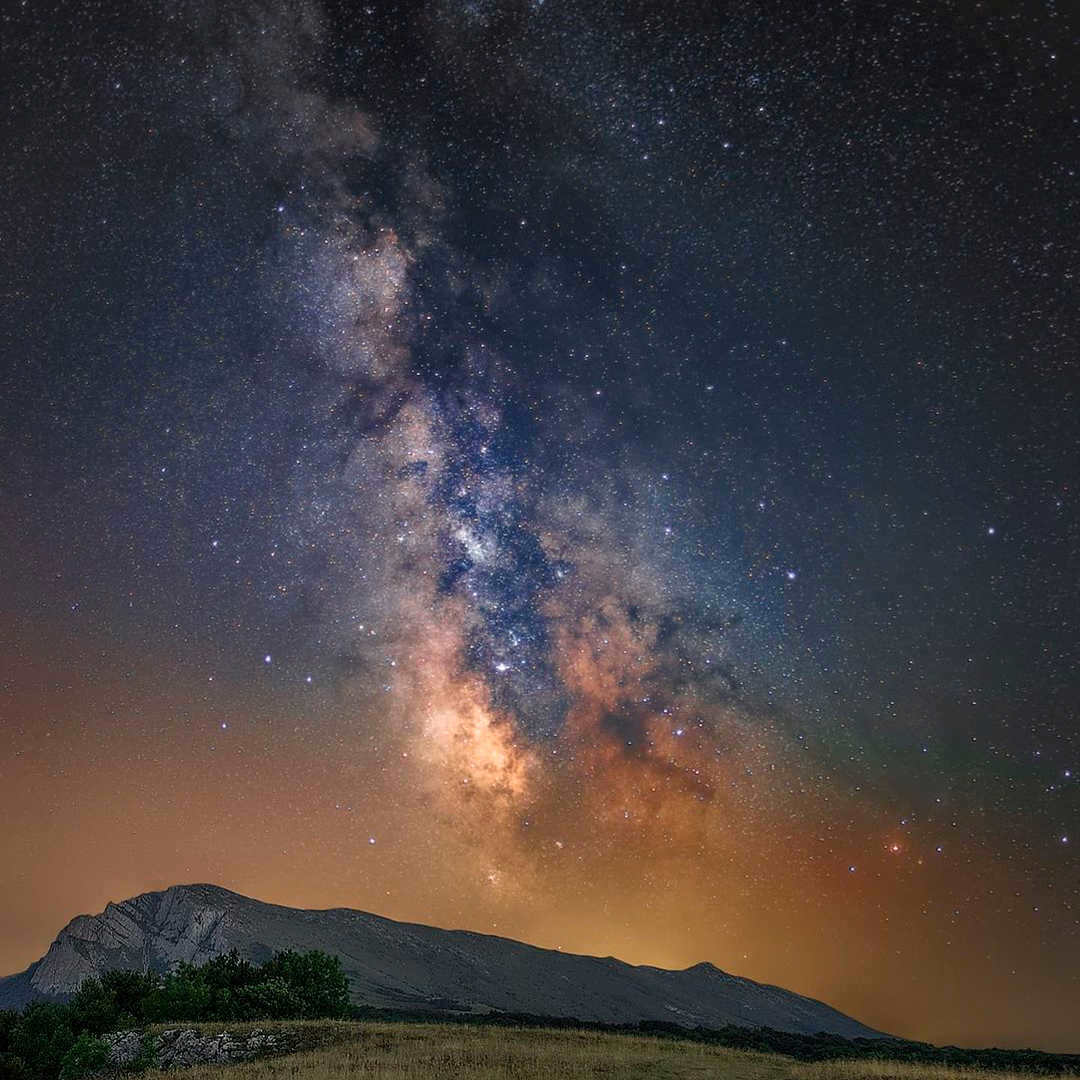
Form and magnitude
The shape of the Milky Way is that of a disk, measuring 30,000 parsecs in diameter. This distance is roughly equivalent to 100,000 light-years or 1 quintillion kilometers in the Earth’s metric system. In terms of thickness, the average measure of the Milky Way disk is 1,000 light-years. Within this disk, one can find a combination of stars, constellations, as well as gas and dust particles.
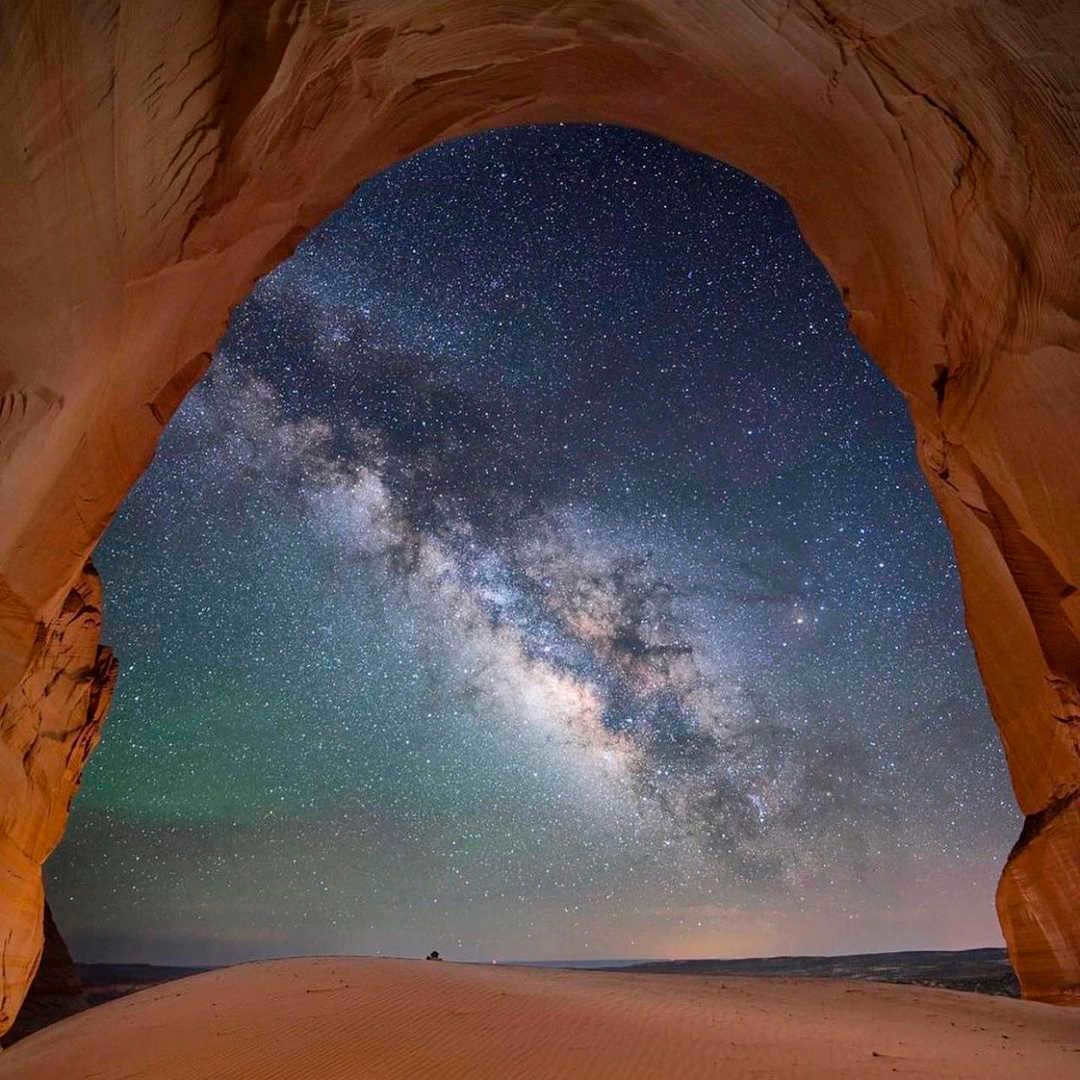
Counting the Stars
The number of stars in the Milky Way galaxy is estimated to be around 400 billion. These stars are primarily found in the neighboring arms of the galaxy. In addition to these, there are also between 25 and 110 billion brown dwarfs present. However, these brown dwarfs do not possess enough brightness or size to be classified as true stars.
Within the confines of the Milky Way, the halo encompasses a substantial amount of dark matter, constituting the majority of its mass. As a consequence, determining its precise value proves to be a challenging task for scientists.
Back in 2009, estimates suggested that the galaxy possessed a mass of 6 * 10'42 kg. However, as more meticulous investigations were carried out a decade later in 2019, it was subsequently established that along a span of 130,000 light years, this
The Milky Way is visible to the naked eye during the months of August and September. It can be observed in the late evening in the southern sky and deep into the night in the southwest.
When searching for the Milky Way, the Great Summer Triangle is a prominent reference point. This triangular formation is made up of three bright stars: Vega, Deneb, and Altair. The Milky Way can be seen following the line connecting Deneb and Altair, resembling a hazy glowing river with soft edges.
One particularly stunning view of the Milky Way can be seen in the constellation of Swan. Here, near Deneb, it splits into two streams that descend towards the horizon. The space between these streams is filled with dark nebulae that absorb the light from distant stars.
The most powerful clusters of stars and the heart of our Galaxy are located in Sagittarius. This is where the Milky Way shines the brightest. However, it is a pity that these parts of the sky can only be clearly seen in the Caucasus region.
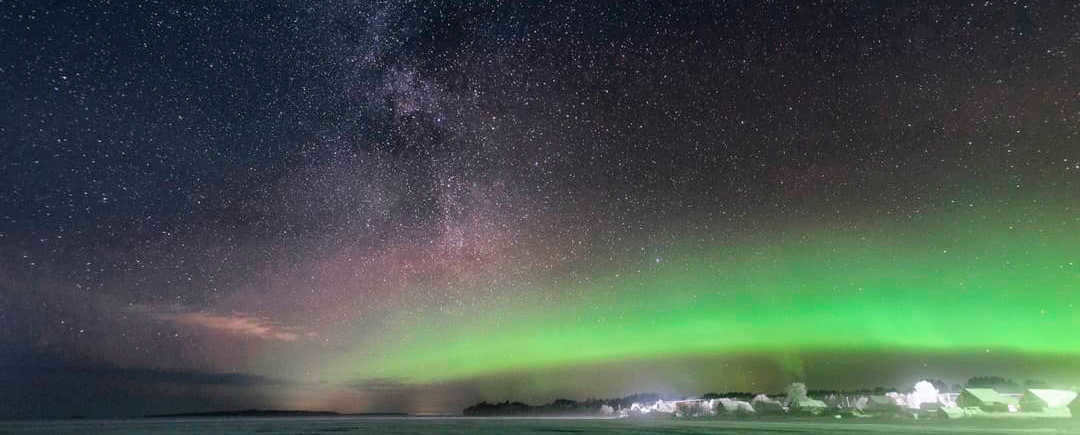
When observing the Milky Way with small binoculars, one can easily notice its complex structure. These optical devices provide a wide field of view, allowing us to see long and extensive nebulous structures, star chains, and clusters of stars, all interspersed with dark spots.
The Future of the Milky Way
Every space object in the Universe follows a predetermined trajectory, which scientists have become adept at calculating. According to their calculations, the Milky Way is expected to collide with the Andromeda Nebula in approximately 4 billion years. Currently, these two objects are approaching each other at a speed of 120 kilometers per second.
The actual collision will happen gradually, and it remains uncertain whether it will be observable by Earth observers. It is highly unlikely that this cosmic event will have any direct impact on the Sun.
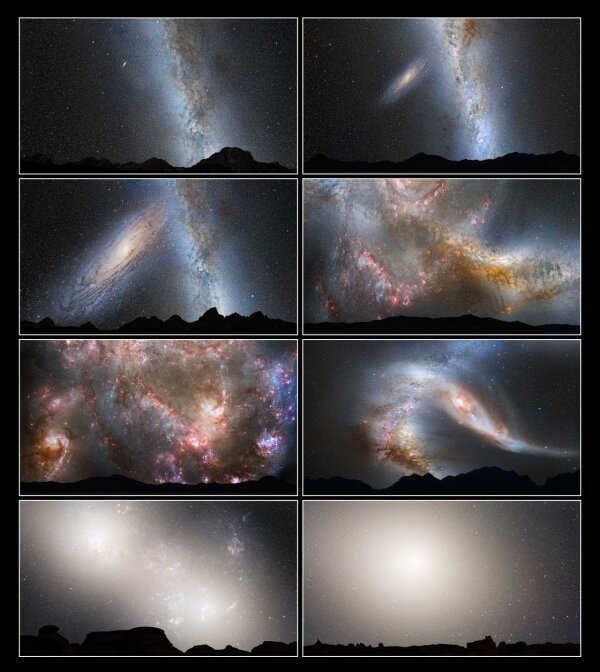
It is highly likely that the newly formed galaxy may completely expel the system, resulting in it becoming an intergalactic object. This will not have any negative effects on the solar system, except for the fact that the starry sky will no longer be as beautiful for Earth observers.
The constellations of the Milky Way will also undergo changes in this scenario. However, there will be no consequences for all living beings, as Earth’s atmosphere provides effective protection against cosmic radiation. The evolution of the Sun is of greater significance for life.
In the event of a collision, our Galaxy will not vanish, and the planets will not be destroyed. Instead, the Milky Way will simply merge with another cluster.
At present, the Milky Way is situated within the distinctive group of galaxies known as the “green gap” and is precisely positioned in the midpoint of its lifespan. The available gas for the creation of new stars has diminished, although the existing stars remain relatively youthful.
Nevertheless, the Milky Way is not anticipated to transform into a “red sequence” galaxy. Following its separation from its companions, it is set to encounter the impending collision that has been previously documented, resulting in our galaxy merging with Andromeda.
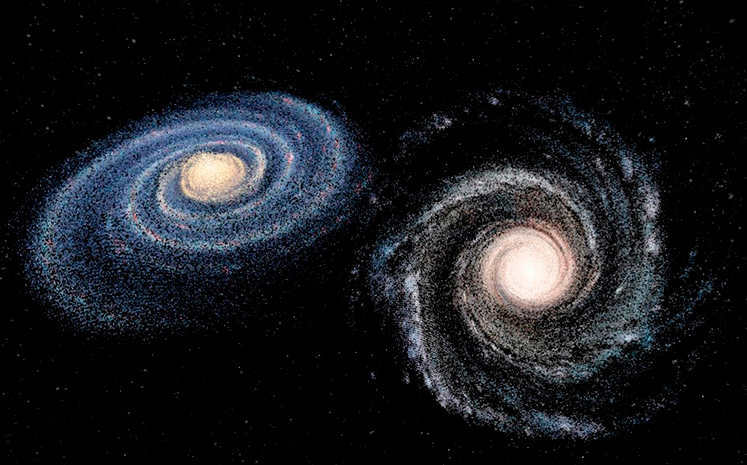
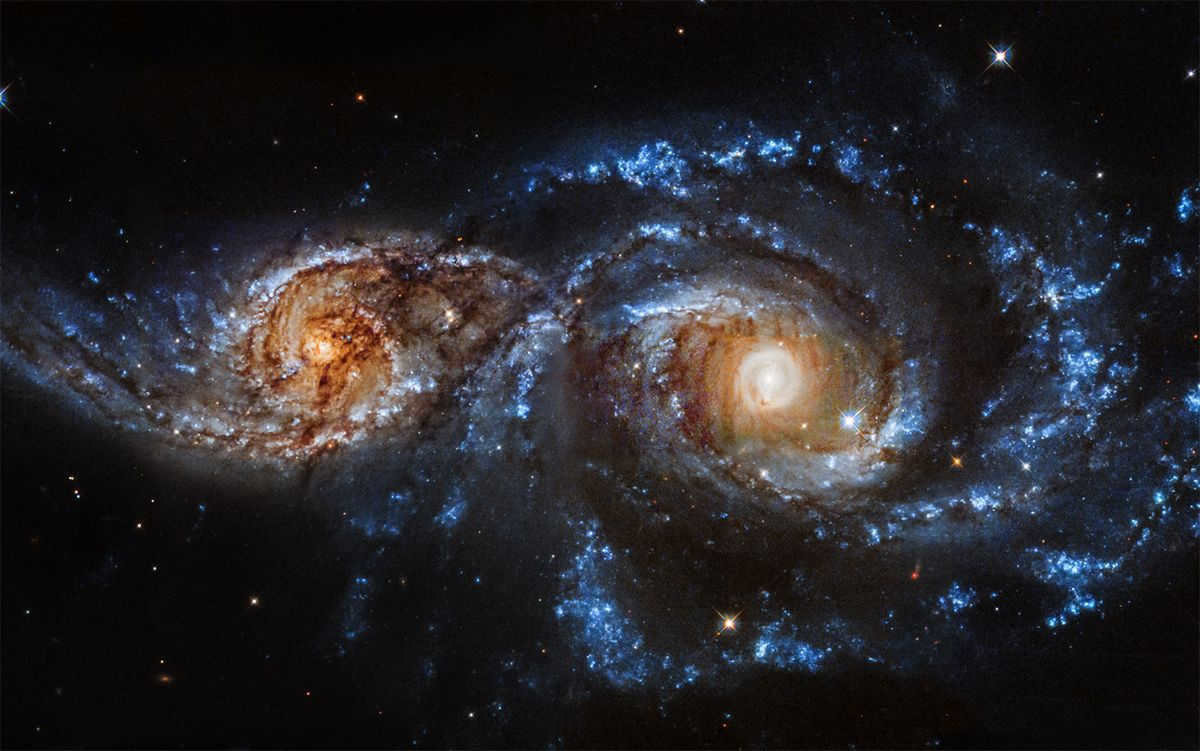
However, these are merely conjectures made by scientists. Even science fiction writers would not dare to speculate on such distant prospects in time: it is a far longer timeframe than the existence of life on the planet thus far.
Frequently Asked Questions
Three of the top regions in Russia for observing the Milky Way are Altai, Crimea, and the Caucasus. Siberia is also quite popular, as there are numerous remote locations far from major civilization.
Watch an informative video about fascinating facts regarding our galaxy
If one observes the universe with keen eyes, it becomes apparent that numerous galaxies are scattered across its vast expanse. The sheer magnitude of this cosmic diversity is awe-inspiring. The universe, much like a living organism composed of cells or a grand structure constructed from bricks, is teeming with hundreds of billions of galaxies.
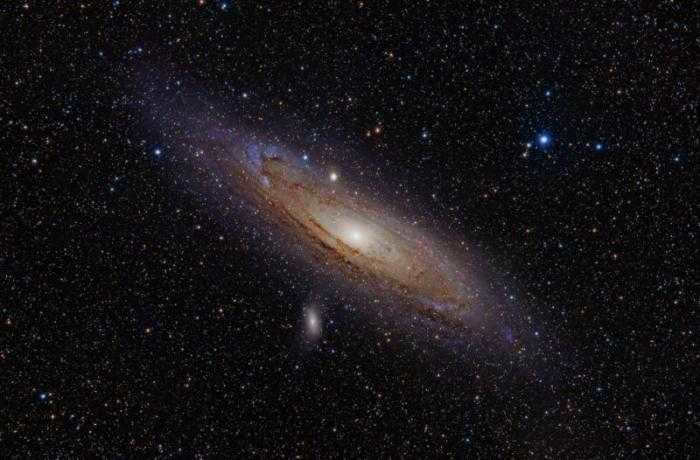
Galaxies are formed by the presence of stars, gas, and dust, and it is within these galaxies that stars and planets can come into existence. Outside of galaxies, there are no stars to be found. The process of hydrogen production and heating, which leads to the birth of new stars, only occurs within galaxies. There are an immense number of galaxies, numbering in the hundreds of billions, but only one of them is known to support life.
Our home is the Milky Way Galaxy.
When we gaze up at the night sky, we are met with a dazzling display of stars. However, if we were to imagine ourselves venturing beyond our own galaxy, we would witness a magnificent spiral shape. Within this vast expanse, the Sun appears as a minuscule speck, almost insignificant in comparison to the galaxy’s immense arms. The Milky Way is a colossal galaxy, ranking among the largest objects in the entire Universe.
Approximately 14 billion years ago, the cosmos was devoid of celestial bodies such as stars, Earth, the Sun, and galaxies. However, a colossal event known as the Big Bang altered this state of affairs. At that time, the nascent Universe consisted of a dense and nearly uniform blend of gas and dust. Subsequently, gravitational forces commenced compressing this mixture. As a consequence, the gas experienced a rise in temperature and the hydrogen within it underwent a transformation into helium, facilitating the birth of stars.
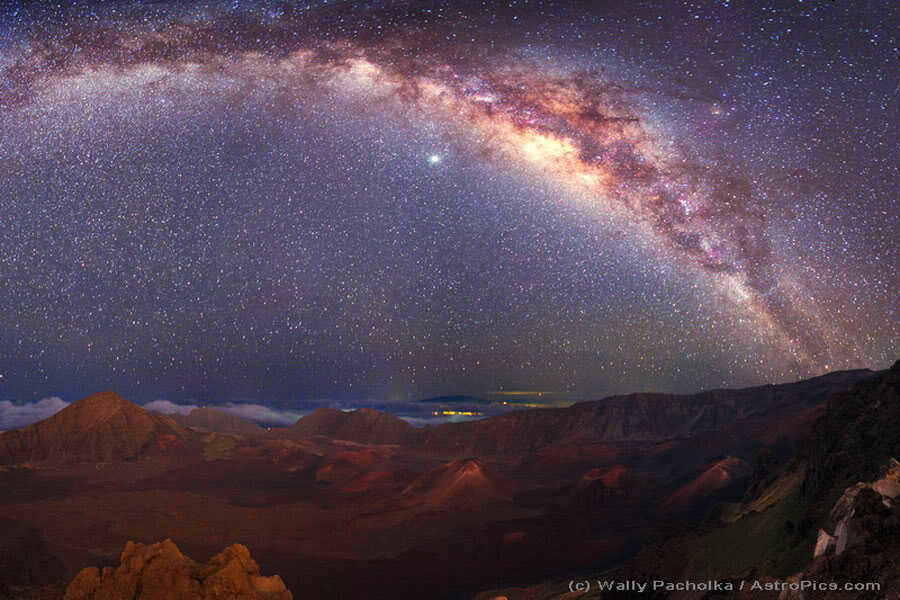
According to the theory, this is how millions of stars were formed, and then gravity gradually brought them together, eventually creating a rotating sphere of stars known as the Galaxy. The important factor that holds these stars together is the force of gravity.
The answer to the question of what keeps the stars in the Galaxy together can be found at the very center of the Milky Way. To find this answer, we need to observe the center of the Milky Way through telescopes. There, we will see stars, but their rotation will be centered around an object that cannot be directly observed. In a sense, they orbit around a void, which is estimated to be 40,000,000,000 times more massive than the Sun. What exactly is this void?

Scientists first made the groundbreaking discovery of a supermassive black hole within our own galaxy, the Milky Way. Subsequent research revealed that these colossal entities exist throughout the vast expanse of the Universe. It is now widely understood that these immense galactic structures harbor black holes at their very core. The question arises: how did these enigmatic entities come into existence?
In the early stages of the Universe’s development, the initial generation of stars bore little resemblance to our own Sun. These celestial giants were enormous in size and possessed a rapid lifespan, culminating in dramatic explosions. After hundreds of millions of years, the hydrogen fuel within these initial stars ignited, resulting in their demise. The remnants of these stellar cataclysms gave rise to the inaugural black holes. Initially modest in scale, these black holes gradually grew in size through the gradual absorption of matter, ultimately reaching their current astronomical proportions.
The expansion of our galaxy.
Over the course of 3 billion years, the Milky Way has undergone collisions and chaos, steadily growing and continuing to assimilate other galaxies. One such galaxy, the dwarf galaxy Sagittarius, has left behind a trail of stars encircling the Milky Way. These stars are gradually separating from Sagittarius, as the Milky Way tears it apart.
The spiral arms of the Milky Way were formed through these galaxy collisions, with Sagittarius playing a crucial role. After the collision with Sagittarius, the spiral arms took shape, providing a new home for the Sun, which now resides 26,000 light-years away from the galaxy’s center. This particular location within the Milky Way offers a relatively tranquil environment with favorable conditions.
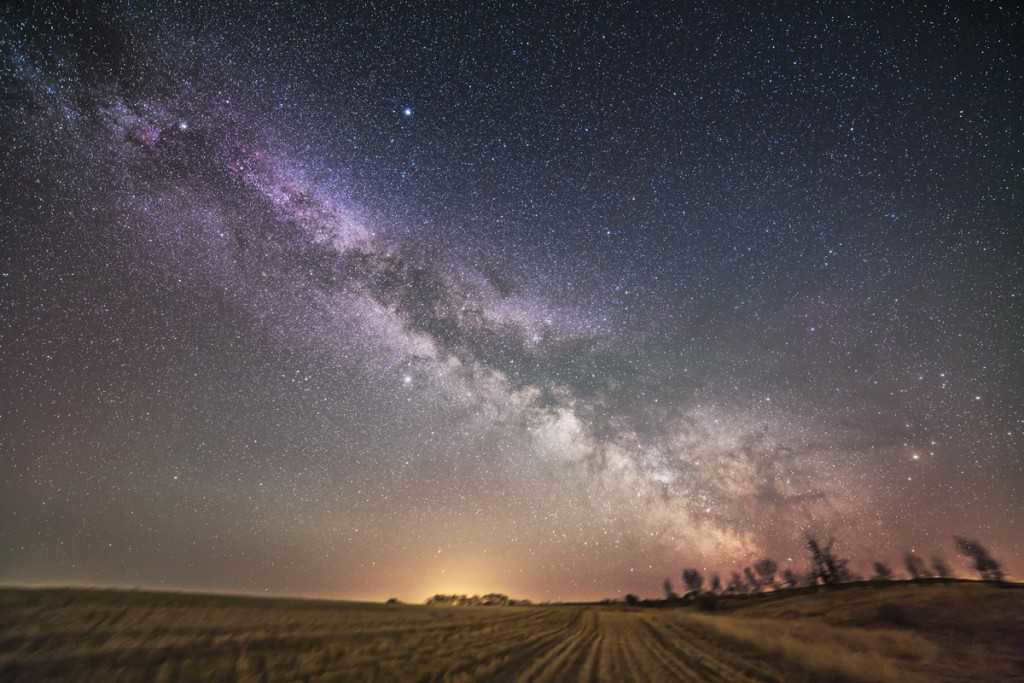
The destiny of the Milky Way.
Nothing in the Universe endures eternally. Our galaxy is once again gearing up for transformation. It doesn’t have much time left to exist in its current state. Its sister galaxy, as vast as it is, is in close proximity and steadily approaching. Scientists speculate that in approximately 5 billion years, these two colossal entities in the Universe will collide.
This entity is already perceptible through the aid of telescopes. This is the Andromeda galaxy. And while in the past our galaxy expanded through collisions and assimilation of other, smaller ones, Andromeda is in no way inferior to the Milky Way. It also possesses a spiral form. Prior to their collision, the night sky will assume a markedly different appearance. In a couple of billion years, you will witness two intersecting bands of stars.
